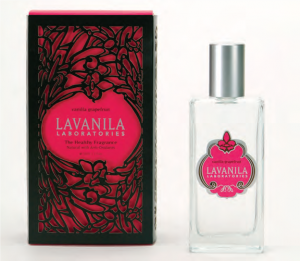When it comes to picky eaters, the truth may not be that hard to swallow
We’ve all heard the stories—the child who completely shuns vegetables or refuses to consume anything but white foods. They’re funny if you aren’t the parent  trying to get healthy food into a picky eater. If the kid is yours, however, it’s no joke. There are reasons for your child’s peculiar eating habits, and things you can do to broaden his or her culinary horizons. First off, you may be surprised to learn that it’s hardly ever a matter of taste. Picky eating is a natural part of toddlerhood, as children express their independence. What parents may believe is a fussy eater may not actually be that at all. “Children don’t tend to eat as much at meals as adults expect them to eat, and babies spit out their food, leading parents to believe that they don’t like it,” says Dr. Maria Padron, a pediatric and adolescent psychiatrist at Trinitas Regional Medical Center. “But babies taste food by spitting it out and licki
trying to get healthy food into a picky eater. If the kid is yours, however, it’s no joke. There are reasons for your child’s peculiar eating habits, and things you can do to broaden his or her culinary horizons. First off, you may be surprised to learn that it’s hardly ever a matter of taste. Picky eating is a natural part of toddlerhood, as children express their independence. What parents may believe is a fussy eater may not actually be that at all. “Children don’t tend to eat as much at meals as adults expect them to eat, and babies spit out their food, leading parents to believe that they don’t like it,” says Dr. Maria Padron, a pediatric and adolescent psychiatrist at Trinitas Regional Medical Center. “But babies taste food by spitting it out and licki ng it, and if parents believe their child doesn’t like it and don’t continue to introduce that food, it becomes a foreign food to them.” Well-meaning parents may try to cater to a picky eater, but experts say that that only backfires. “They create a monster,” Dr. Padron explains. “Unless there’s a medical contraindication, children should be ‘helped’ to eat everything that the family eats.” Easier said than done, right? Don’t give up until you’ve exhausted these strategies: Offer variety earlier. “Kids often become picky eaters because they haven’t been exposed to a lot of foods,” Dr. Padron says. “You should slowly expose children to different kinds of foods.” Hold your ground. Your child may decide to go on a hunger strike for a meal or two if you suddenly stop being a short order cook and insist that he eats what you’re eating, but he won’t hold out forever. “Kids may refuse to eat for a few meals, but as long as they’re healthy and still drinking liquids, it’s fine,” Dr. Padron says. “When he’s hungry, your child will eat.” Keep reintroducing the same food. “Parents need to be patient w
ng it, and if parents believe their child doesn’t like it and don’t continue to introduce that food, it becomes a foreign food to them.” Well-meaning parents may try to cater to a picky eater, but experts say that that only backfires. “They create a monster,” Dr. Padron explains. “Unless there’s a medical contraindication, children should be ‘helped’ to eat everything that the family eats.” Easier said than done, right? Don’t give up until you’ve exhausted these strategies: Offer variety earlier. “Kids often become picky eaters because they haven’t been exposed to a lot of foods,” Dr. Padron says. “You should slowly expose children to different kinds of foods.” Hold your ground. Your child may decide to go on a hunger strike for a meal or two if you suddenly stop being a short order cook and insist that he eats what you’re eating, but he won’t hold out forever. “Kids may refuse to eat for a few meals, but as long as they’re healthy and still drinking liquids, it’s fine,” Dr. Padron says. “When he’s hungry, your child will eat.” Keep reintroducing the same food. “Parents need to be patient w hen they’re introducing new foods, and not get upset if kids aren’t jumping to eat broccoli right away,” Dr. Padron advises. Even if your children didn’t like asparagus the first few times, all it may take is the repetition (or a new way of serving it) to make them like it the 10th time around. You just need to insist on one bite each time you serve it— if they still don’t like it, don’t force it. Get your kids involved. Take your kids along to the grocery store and let them choose something new to try in the produce department—and if you have the time, let them get involved in preparing the dinner, too. By allowing your child to have a say in what they’re eating and an investment in the meal, you may find that they’re more willing to eat the fruit they picked out or the side dish they helped make. Minimize distractions at dinnertime. If there are other forms of entertainment beyond eating—a TV, books or toys—that can keep kids from attending to the task at hand. Instead, look for ways to make the meal itself more entertaining, with a colorful variety of vegetables or interesting presentations. Seek help. Get your pediatrician on board, especially if it’s been a long-standing issue, where your child’s eating habits may have become ingrained. For more severe cases, your pediatrician may recommend speaking to an expert, such as a counselor or a speech or occupational therapist. Indeed, in some instances, picky eating can be the sign of a more serious issue—a sensory disorder or a mechanical issue with feeding. So when is the right time to call in professional help? “In children with feeding issues, it could be a textural or tactile issue, often with mushy foods like bananas or yogurt,” says Kevin Nelson, occupational therapist and Manager of Trinitas Children’s Therapy Services. “Or it can be a mechanical issue, where they simply don’t have the musculature in their mouth to handle that food.” Whatever the cause of a child’s pickiness, in the end the key is to work slowly. Your kid won’t become an adventurous eater overnight, and if the issues are more sensory or mechanical in nature, you may need to follow a much gentler, slower path toward introducing these foods.
hen they’re introducing new foods, and not get upset if kids aren’t jumping to eat broccoli right away,” Dr. Padron advises. Even if your children didn’t like asparagus the first few times, all it may take is the repetition (or a new way of serving it) to make them like it the 10th time around. You just need to insist on one bite each time you serve it— if they still don’t like it, don’t force it. Get your kids involved. Take your kids along to the grocery store and let them choose something new to try in the produce department—and if you have the time, let them get involved in preparing the dinner, too. By allowing your child to have a say in what they’re eating and an investment in the meal, you may find that they’re more willing to eat the fruit they picked out or the side dish they helped make. Minimize distractions at dinnertime. If there are other forms of entertainment beyond eating—a TV, books or toys—that can keep kids from attending to the task at hand. Instead, look for ways to make the meal itself more entertaining, with a colorful variety of vegetables or interesting presentations. Seek help. Get your pediatrician on board, especially if it’s been a long-standing issue, where your child’s eating habits may have become ingrained. For more severe cases, your pediatrician may recommend speaking to an expert, such as a counselor or a speech or occupational therapist. Indeed, in some instances, picky eating can be the sign of a more serious issue—a sensory disorder or a mechanical issue with feeding. So when is the right time to call in professional help? “In children with feeding issues, it could be a textural or tactile issue, often with mushy foods like bananas or yogurt,” says Kevin Nelson, occupational therapist and Manager of Trinitas Children’s Therapy Services. “Or it can be a mechanical issue, where they simply don’t have the musculature in their mouth to handle that food.” Whatever the cause of a child’s pickiness, in the end the key is to work slowly. Your kid won’t become an adventurous eater overnight, and if the issues are more sensory or mechanical in nature, you may need to follow a much gentler, slower path toward introducing these foods.
“Seeing a therapist is not the first step in a long and expensive process.” 
“We slowly try to introduce the textures to them,” Nelson explains. “If they have an issue with mushy textures, we might start to do some play with finger paint or shaving cream to get them comfortable with that texture. Then we’ll have them sit at a table with the yogurt on the table, then put a dab on their finger, maybe have them smell it. Finally, we’ll put a dab on their tongue. We slowly try to get it closer to get them to tolerate it.” Depending on the severity of the issues, this process could take months. However, if you consistently work with children at home as well as in therapy, you may find that you’ll move faster toward turning your child into a well-rounded eater. Also, understand that seeing a therapist is not the first step in a long and expensive process. On the contrary, says Nelson. “You may need to see a therapist for an initial consultation, just to get started in the right direction and get trained on how to handle it.” “A lot of our job is educating parents on what’s appropriate,” he says, “and how to deal with different situations.” EDGE
Editor’s Note: Lisa Milbrand is a New Jersey-based writer whose articles on health and relationships appear in Parents, Arthritis Today and Modern Bride. Her blog themamahood.com celebrates the life of a working mother.


 That’s fine if your goal is to own an undistinguished sofa-sized oil. But what if you want fine art—the kind that will brighten your life and fatten your bottom line? The answer may be as close as your local gallery. For those who believe you have to cross the Hudson to find investment-grade art, this idea may go against the grain. But the fact is that building a relationship with a gallery (or galleries) here in the Garden State can yield a far greater return—not just in terms of value and quality, but in so many other ways. This applies to the seasoned collector as well as the novice. In fact, if you’re like so many New Jerseyans, the thought of opening your checkbook in a local art gallery is nothing short of terrifying. First things first. Let’s wrap our minds around the reasons New Jerseyans don’t buy art. Above all there is the intimidation factor. Most people are afraid they’ll be taken to the cleaners by an unscrupulous gallery owner.
That’s fine if your goal is to own an undistinguished sofa-sized oil. But what if you want fine art—the kind that will brighten your life and fatten your bottom line? The answer may be as close as your local gallery. For those who believe you have to cross the Hudson to find investment-grade art, this idea may go against the grain. But the fact is that building a relationship with a gallery (or galleries) here in the Garden State can yield a far greater return—not just in terms of value and quality, but in so many other ways. This applies to the seasoned collector as well as the novice. In fact, if you’re like so many New Jerseyans, the thought of opening your checkbook in a local art gallery is nothing short of terrifying. First things first. Let’s wrap our minds around the reasons New Jerseyans don’t buy art. Above all there is the intimidation factor. Most people are afraid they’ll be taken to the cleaners by an unscrupulous gallery owner. Second, they are nervous that their friends will make fun of a purchase that is different and modern, or simply out of character. Feeding this double-barreled paranoia is the fact that—particularly in the case of an abstract piece—one cannot specifically define the level of talent and technical skill involved in producing modern art. And on top of these very legitimate fears is the great, big elephant in the room: Why, when New York City is so close, would anyone buy art in New Jersey in the first place? Permit me to deal with this last objection first. Galleries here in New Jersey are indeed different than most galleries in the city. That is to say that they are friendly and approachable. If you think about it, it makes complete sense. Gallery owners are where they are, and do what they do, because they love and appreciate art. If they were in this business to make a killing, I hate to say it but they would be in Manhattan. What else does New Jersey have to offer art buyers that the city doesn’t? Well, there is a lot of first-rate talent that, for one reason or another, is only shown on this side of the Hudson.
Second, they are nervous that their friends will make fun of a purchase that is different and modern, or simply out of character. Feeding this double-barreled paranoia is the fact that—particularly in the case of an abstract piece—one cannot specifically define the level of talent and technical skill involved in producing modern art. And on top of these very legitimate fears is the great, big elephant in the room: Why, when New York City is so close, would anyone buy art in New Jersey in the first place? Permit me to deal with this last objection first. Galleries here in New Jersey are indeed different than most galleries in the city. That is to say that they are friendly and approachable. If you think about it, it makes complete sense. Gallery owners are where they are, and do what they do, because they love and appreciate art. If they were in this business to make a killing, I hate to say it but they would be in Manhattan. What else does New Jersey have to offer art buyers that the city doesn’t? Well, there is a lot of first-rate talent that, for one reason or another, is only shown on this side of the Hudson.  There is no comparison in terms of service. Try walking into a gallery on West Broadway or Madison Avenue and asking the owner to drive out to your place in Westfield for a consultation. That thud is the sound of his jaw hitting the floor. A gallery owner in or around your town, on the other hand, will likely welcome this opportunity. New Jersey art dealers are genuinely interested in the people who live around them, and cultivating relationships that extend beyond the buying and selling of art. They are part of the fabric of the community. Connecting with a local gallery also happens to be a superb way of adding texture to your social life. Once you’re “on the list” you’ll be invited to opening receptions whenever a new artist is featured. How often do you get to mix and mingle with new people who just happen to share a common interest? The majority of people attending gallery openings are like you—they want to know more about art and the people who buy it. (By the way, a free wine-and-cheese gathering is a wonderful springboard to dinner, a movie, or whatever else you’ve planned for an evening out.) Okay, so what about the financial side of the gallery relationship? Now more than ever, as we balance the merits of saving and spending, it is important to know what you get for your money when you purchase a work of art. Whether the price tag is several hundred or several thousand, dealers who live and work nearby are unlikely to “rip off” customers; they have reputations to uphold. If you happen to be one of the fortunate few who have five or six figures to invest in art, a good dealer will have solid connections to galleries that can point you in the right direction (and more importantly, steer you clear of the wrong direction). Either way, if your appreciation of art is tied to its potential appreciation, make that clear to the gallery owners you deal with.
There is no comparison in terms of service. Try walking into a gallery on West Broadway or Madison Avenue and asking the owner to drive out to your place in Westfield for a consultation. That thud is the sound of his jaw hitting the floor. A gallery owner in or around your town, on the other hand, will likely welcome this opportunity. New Jersey art dealers are genuinely interested in the people who live around them, and cultivating relationships that extend beyond the buying and selling of art. They are part of the fabric of the community. Connecting with a local gallery also happens to be a superb way of adding texture to your social life. Once you’re “on the list” you’ll be invited to opening receptions whenever a new artist is featured. How often do you get to mix and mingle with new people who just happen to share a common interest? The majority of people attending gallery openings are like you—they want to know more about art and the people who buy it. (By the way, a free wine-and-cheese gathering is a wonderful springboard to dinner, a movie, or whatever else you’ve planned for an evening out.) Okay, so what about the financial side of the gallery relationship? Now more than ever, as we balance the merits of saving and spending, it is important to know what you get for your money when you purchase a work of art. Whether the price tag is several hundred or several thousand, dealers who live and work nearby are unlikely to “rip off” customers; they have reputations to uphold. If you happen to be one of the fortunate few who have five or six figures to invest in art, a good dealer will have solid connections to galleries that can point you in the right direction (and more importantly, steer you clear of the wrong direction). Either way, if your appreciation of art is tied to its potential appreciation, make that clear to the gallery owners you deal with. They will help you assess potential purchases (or emerging artists) with that goal in mind. Another advantage to buying in New Jersey—besides the good feeling that comes with supporting a local business— is that gallery owners here may be much more likely to work a deal that fits your finances. Their overhead is lower than in the city, which may translate into wiggle room when you whip out the checkbook. Finally, keep in mind as you shop or budget for fine art that you are buying something that could turn out to be a family treasure. Art is timeless. Art is priceless. Unlike a sofa or granite countertop, it does not depreciate the moment it walks through your front door. If you’ve chosen wisely, in fact, it could appreciate dramatically. And as it moves from your home to your children’s, and then to your children’s children’s and beyond, it serves as a link between the generations. In the meantime, this investment will enhance your quality of life every time you fix your gaze upon it. Indeed, as Pablo Picasso once observed, art “washes away from the soul the dust of everyday life.” Amen to that. Some other art icons have also had a thing or two to say on the subject. Jackson Pollock famously noted that every good painter paints what he is. Rembrandt suggested practicing what you know to make clear what now you do not know. Believe it or not, Michelangelo often insisted, I can actually draw. Clarity and simplicity enabled these great painters to create magnificently complex works of art. When it comes to buying art in the Garden State, a little clarity and simplicity also goes a long way. EDGE
They will help you assess potential purchases (or emerging artists) with that goal in mind. Another advantage to buying in New Jersey—besides the good feeling that comes with supporting a local business— is that gallery owners here may be much more likely to work a deal that fits your finances. Their overhead is lower than in the city, which may translate into wiggle room when you whip out the checkbook. Finally, keep in mind as you shop or budget for fine art that you are buying something that could turn out to be a family treasure. Art is timeless. Art is priceless. Unlike a sofa or granite countertop, it does not depreciate the moment it walks through your front door. If you’ve chosen wisely, in fact, it could appreciate dramatically. And as it moves from your home to your children’s, and then to your children’s children’s and beyond, it serves as a link between the generations. In the meantime, this investment will enhance your quality of life every time you fix your gaze upon it. Indeed, as Pablo Picasso once observed, art “washes away from the soul the dust of everyday life.” Amen to that. Some other art icons have also had a thing or two to say on the subject. Jackson Pollock famously noted that every good painter paints what he is. Rembrandt suggested practicing what you know to make clear what now you do not know. Believe it or not, Michelangelo often insisted, I can actually draw. Clarity and simplicity enabled these great painters to create magnificently complex works of art. When it comes to buying art in the Garden State, a little clarity and simplicity also goes a long way. EDGE 
 Seven forty-five on a Saturday night, and the show is about to begin. Regulars file into the corner storefront at Maplewood and Baker, settling into seats that almost seem assigned. There are nods of recognition, glances over to the fellow in charge, a sense of anticipation in not-sohushed exchanges. Corks pop. Wine glasses are filled and the floor crew at Arturo’s switches into high gear. At the rear of the intimate restaurant, chef/maestro Dan Richer already has warmed up his wood-burning oven by firing dozens and dozens of pizzas for the early-eating crowd. But right now, as the 8 o’clock hour approaches, he’s dispatching cups filled with husked cherries, also known as bush cherries. They’re nutty little fruits that look a bit like miniature tomatillos, but taste like nothing else on the planet. Peel back the papery skins, flick the fruit into your mouth and wonder how you’ll ever again eat another sugared peanut or mushy olive as a prelude to dinner. They’re the ideal starter for Richer’s unique show. It’s dinner theater, this ritualistic Saturday night minuet between chef and diner, a paean to all that’s locally grown and produced and catches the chef’s discerning eye. There’s no formal bill of fare on this night, just a procession of plates served forth with no fanfare and minimal explanation. It’s based on the trust Richer has built up between himself and his diners, folks who have warmed to the distinctive style of both the rustic, no-frills dining space and the man who delivers a spare, yet deeply satisfying dining experience. “Coppa, house-made,” is the way our server describes the next dish. He knows no embellishment is needed to sell diners on the veritable kaleidoscope made from cured pork shoulder and its fat, presented as delicate slices of salumi that appear air-brushed on the platter. Alone, or partnered with crusty, country bread, this coppa is pretty darn perfect. Actually, so is Arturo’s. Richer took over the old pizza joint in downtown Maplewood in early 2007 and re-made it to suit his dreams and palate. Pizzas are now of the modern age – that is to say, they go back in time to ovens fueled by wood, to crusts born of kneading and slow-rise techniques, to toppings that tilt toward Spartan, not extra-anything. A welledited selection of those thin-crust pizzas plus pastas are the order of the night five days a week, with Tuesdays turned over to a scaled-back tasting menu and Saturdays the destination-diner extravaganza. On that night, Richer goes strictly market and microseasonal. It’s completely, obsessively ingredient-driven in a good way. Ask about the olive oil, for instance, and you’ll be brought a bottle of the newest member of the Arturo’s Olive Oil Brigade, an unfiltered number from Puglia whose fruitiness makes already silky-sweet scallops even silkier and sweeter. These scallops are the star of Richer’s crudo, a bowl of dense and rich shellfish bathed in the Puglian oil
Seven forty-five on a Saturday night, and the show is about to begin. Regulars file into the corner storefront at Maplewood and Baker, settling into seats that almost seem assigned. There are nods of recognition, glances over to the fellow in charge, a sense of anticipation in not-sohushed exchanges. Corks pop. Wine glasses are filled and the floor crew at Arturo’s switches into high gear. At the rear of the intimate restaurant, chef/maestro Dan Richer already has warmed up his wood-burning oven by firing dozens and dozens of pizzas for the early-eating crowd. But right now, as the 8 o’clock hour approaches, he’s dispatching cups filled with husked cherries, also known as bush cherries. They’re nutty little fruits that look a bit like miniature tomatillos, but taste like nothing else on the planet. Peel back the papery skins, flick the fruit into your mouth and wonder how you’ll ever again eat another sugared peanut or mushy olive as a prelude to dinner. They’re the ideal starter for Richer’s unique show. It’s dinner theater, this ritualistic Saturday night minuet between chef and diner, a paean to all that’s locally grown and produced and catches the chef’s discerning eye. There’s no formal bill of fare on this night, just a procession of plates served forth with no fanfare and minimal explanation. It’s based on the trust Richer has built up between himself and his diners, folks who have warmed to the distinctive style of both the rustic, no-frills dining space and the man who delivers a spare, yet deeply satisfying dining experience. “Coppa, house-made,” is the way our server describes the next dish. He knows no embellishment is needed to sell diners on the veritable kaleidoscope made from cured pork shoulder and its fat, presented as delicate slices of salumi that appear air-brushed on the platter. Alone, or partnered with crusty, country bread, this coppa is pretty darn perfect. Actually, so is Arturo’s. Richer took over the old pizza joint in downtown Maplewood in early 2007 and re-made it to suit his dreams and palate. Pizzas are now of the modern age – that is to say, they go back in time to ovens fueled by wood, to crusts born of kneading and slow-rise techniques, to toppings that tilt toward Spartan, not extra-anything. A welledited selection of those thin-crust pizzas plus pastas are the order of the night five days a week, with Tuesdays turned over to a scaled-back tasting menu and Saturdays the destination-diner extravaganza. On that night, Richer goes strictly market and microseasonal. It’s completely, obsessively ingredient-driven in a good way. Ask about the olive oil, for instance, and you’ll be brought a bottle of the newest member of the Arturo’s Olive Oil Brigade, an unfiltered number from Puglia whose fruitiness makes already silky-sweet scallops even silkier and sweeter. These scallops are the star of Richer’s crudo, a bowl of dense and rich shellfish bathed in the Puglian oil  with needle-thin slivers of French breakfast radish that add color and bite to the raw-fish dish. There are a few twirls of baby greens—so tiny that they probably are better thought of as newborn greens—to add color and contrast, and that’s it. It’s gentle, it’s refined, it’s an exacting example of what this chef is trying to do: simplify, simplify, simplify. That’s his culinary style, and it’s both brave and smart. While others less secure in their métier, less confident of their skills, fuss and add a silly number of frills to a plate, Richer practices the art of the take-away. He pares down a dish to its fundamentals, letting his ingredients assume center stage. A salad of baby arugula, for instance, is accented by thin slices of peaches and flecks of shaved Parmigiano- Reggiano. That’s it. High-season tomatoes, both cheery Sun Golds and beefy San Marzanos, are chopped and set in a glass compote to be served only with a sprinkling of sea salt. The tomatoes’ own juices make it good to the last drop. Tagliolini, a thin-strand pasta, is too fresh, too creamy in taste and texture to need anything more than a handful of teeny cubes of zucchini and a little grated Parmigiano Reggiano. We all but bribed our server to admit to an infusion of cream or butter. No, we were told. Nothing but the fresh pasta, the zucchini, the Parmigiano-Reggiano. That’s what good pasta can do. And a good hunk of pork shank needs but a bed of earthy kale to keep it company. In northern states, it’s such an underappreciated partnership, anything pig and greens. In Richer’s hands, it could be the next big thing in Yankeeland. His whipped ricotta, served with raspberries and what possibly was a mirage of shaved dark chocolate, is precisely what dessert should be: neither overwhelmingly sweet nor baroque in scale. I would’ve had seconds had seconds been offered, however, since I’ve always dreamed of cheese and fruit being transformed into just this kind of finale. I left Arturo’s thinking that either I should 1) move to Maplewood or 2) convince Richer to take his show on the road to my hometown. I’ll further assess these options when I return to Arturo’s for the duck prosciutto, hazelnut-pear salad and pasta with wild boar ragu. For without a doubt, this food needs to be a regular part of my eating life. EDGE
with needle-thin slivers of French breakfast radish that add color and bite to the raw-fish dish. There are a few twirls of baby greens—so tiny that they probably are better thought of as newborn greens—to add color and contrast, and that’s it. It’s gentle, it’s refined, it’s an exacting example of what this chef is trying to do: simplify, simplify, simplify. That’s his culinary style, and it’s both brave and smart. While others less secure in their métier, less confident of their skills, fuss and add a silly number of frills to a plate, Richer practices the art of the take-away. He pares down a dish to its fundamentals, letting his ingredients assume center stage. A salad of baby arugula, for instance, is accented by thin slices of peaches and flecks of shaved Parmigiano- Reggiano. That’s it. High-season tomatoes, both cheery Sun Golds and beefy San Marzanos, are chopped and set in a glass compote to be served only with a sprinkling of sea salt. The tomatoes’ own juices make it good to the last drop. Tagliolini, a thin-strand pasta, is too fresh, too creamy in taste and texture to need anything more than a handful of teeny cubes of zucchini and a little grated Parmigiano Reggiano. We all but bribed our server to admit to an infusion of cream or butter. No, we were told. Nothing but the fresh pasta, the zucchini, the Parmigiano-Reggiano. That’s what good pasta can do. And a good hunk of pork shank needs but a bed of earthy kale to keep it company. In northern states, it’s such an underappreciated partnership, anything pig and greens. In Richer’s hands, it could be the next big thing in Yankeeland. His whipped ricotta, served with raspberries and what possibly was a mirage of shaved dark chocolate, is precisely what dessert should be: neither overwhelmingly sweet nor baroque in scale. I would’ve had seconds had seconds been offered, however, since I’ve always dreamed of cheese and fruit being transformed into just this kind of finale. I left Arturo’s thinking that either I should 1) move to Maplewood or 2) convince Richer to take his show on the road to my hometown. I’ll further assess these options when I return to Arturo’s for the duck prosciutto, hazelnut-pear salad and pasta with wild boar ragu. For without a doubt, this food needs to be a regular part of my eating life. EDGE


 stay. The daughter of professional dancers, the Las Vegas born-and-bred Wesley took her show on the road—first to the University of Evansville as an undergrad and then to the Juilliard School in New York. Along the way, Wesley also studied at London’s Royal Academy of Dramatic Art. A plum role on Broadway in David Hare’s The Vertical Hour and the lead in the 2007 dance film How She Move earned her an audition for Alan Ball, who was casting the tricky role of Tara Thornton in True Blood. The depth she brought to the character not only won her the part, it has since made Wesley one of the most popular characters on television. EDGE Assignments Editor Zack Burgess took the actress back to Las Vegas to talk about her show business roots and inspirations, and to explore the imaginative and eclectic Rutina Look (his words, not hers). The ground rules for the interview? Only one “vampire question” allowed (our rules, not hers). Oh, the pressure! As usual, Zack saved the best for last.
stay. The daughter of professional dancers, the Las Vegas born-and-bred Wesley took her show on the road—first to the University of Evansville as an undergrad and then to the Juilliard School in New York. Along the way, Wesley also studied at London’s Royal Academy of Dramatic Art. A plum role on Broadway in David Hare’s The Vertical Hour and the lead in the 2007 dance film How She Move earned her an audition for Alan Ball, who was casting the tricky role of Tara Thornton in True Blood. The depth she brought to the character not only won her the part, it has since made Wesley one of the most popular characters on television. EDGE Assignments Editor Zack Burgess took the actress back to Las Vegas to talk about her show business roots and inspirations, and to explore the imaginative and eclectic Rutina Look (his words, not hers). The ground rules for the interview? Only one “vampire question” allowed (our rules, not hers). Oh, the pressure! As usual, Zack saved the best for last.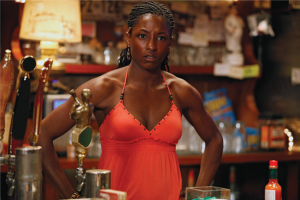
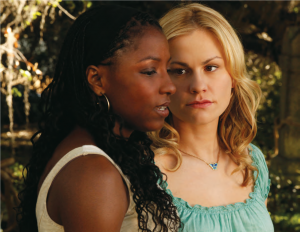

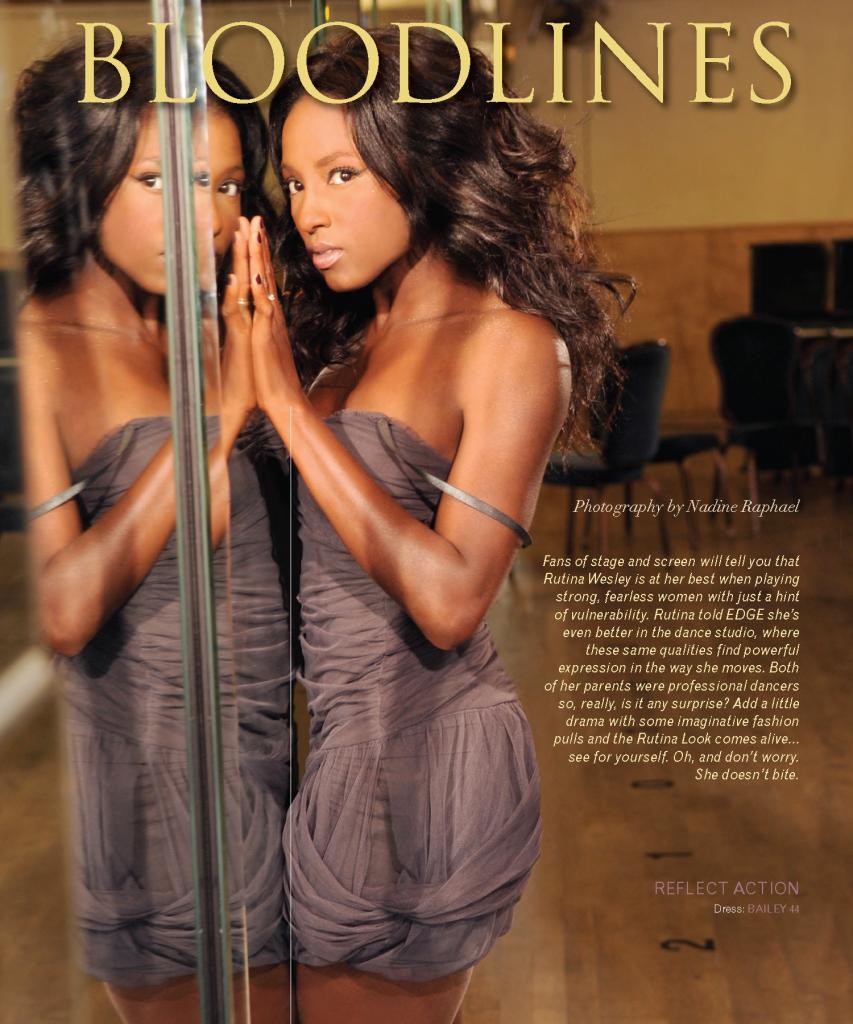
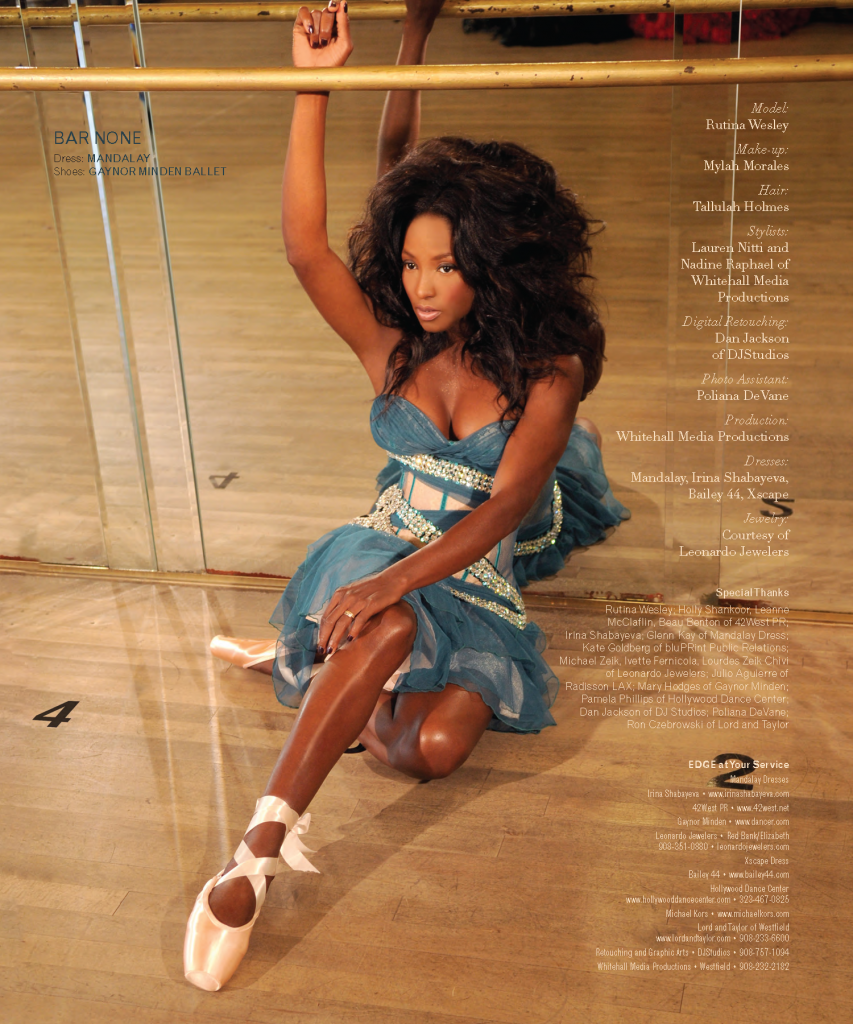
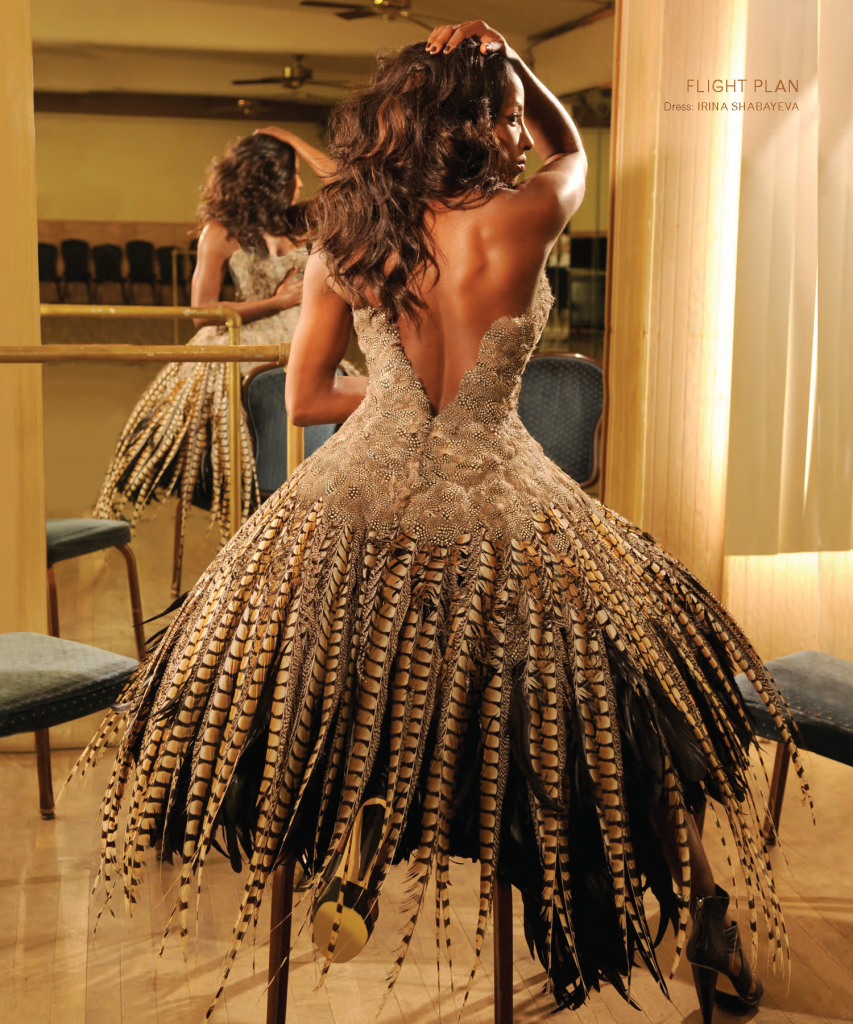

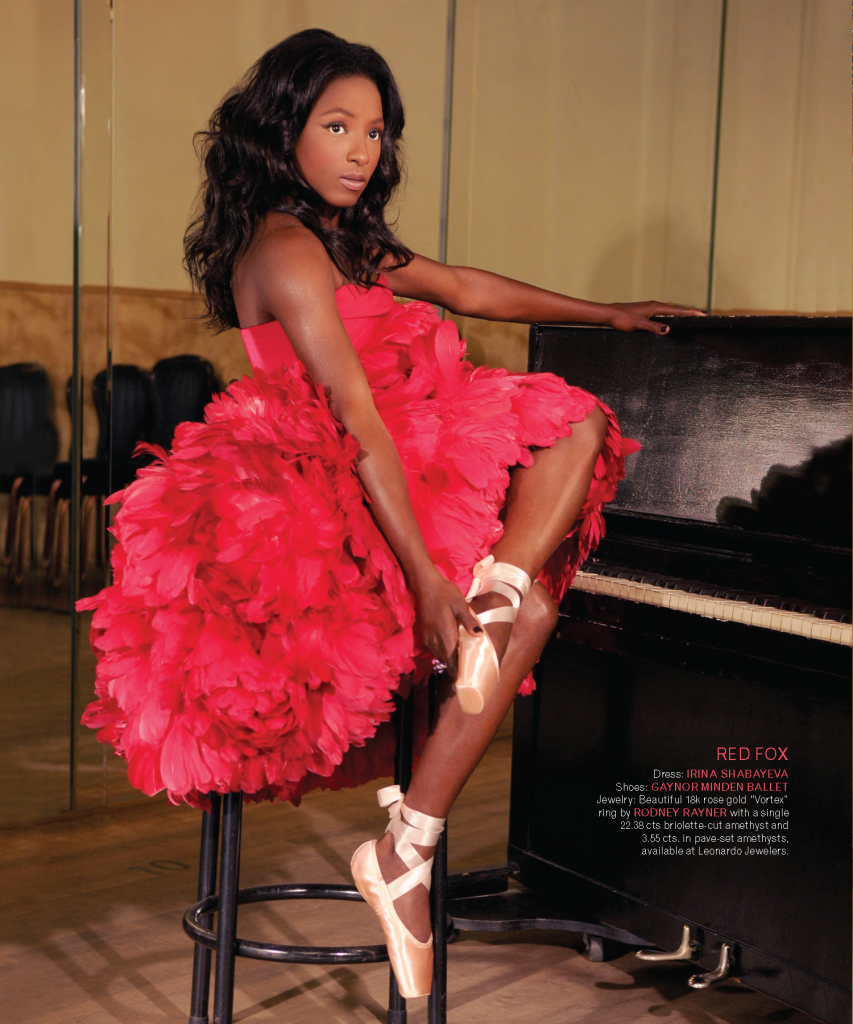
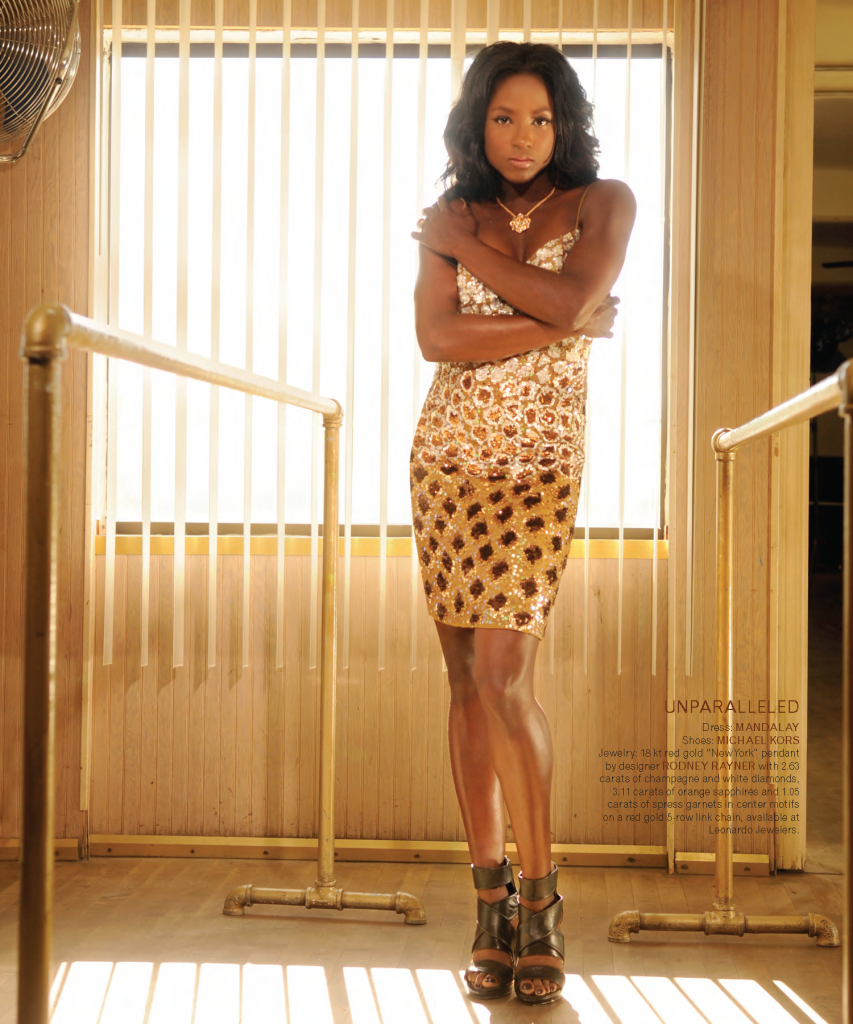

 A great debate is raging in the tech world. It concerns the type of devices today’s youth will be using to read books a decade from now. Will there be a way-cooler version of the iPad? Will smart phones become personal libraries? Will the printed page magically appear in space a foot or two away? Fun stuff. Star Trek stuff—going where no book has gone before. But these flights of fancy tend to overlook a more immediate issue concerning New Jersey’s parents and educators: Will tomorrow’s 20-somethings be reading books at all? Before sounding the alarm bell too loudly, it’s worth noting that New Jersey students, as a group, mop up on just about every standardized test that measures reading proficiency. However, proficiency does not guarantee a lifelong love of reading. Every scrap of evidence available on the reading habits of adults tells us that they echo their experience with literature in grade school and high school. Indeed, kids who regard reading
A great debate is raging in the tech world. It concerns the type of devices today’s youth will be using to read books a decade from now. Will there be a way-cooler version of the iPad? Will smart phones become personal libraries? Will the printed page magically appear in space a foot or two away? Fun stuff. Star Trek stuff—going where no book has gone before. But these flights of fancy tend to overlook a more immediate issue concerning New Jersey’s parents and educators: Will tomorrow’s 20-somethings be reading books at all? Before sounding the alarm bell too loudly, it’s worth noting that New Jersey students, as a group, mop up on just about every standardized test that measures reading proficiency. However, proficiency does not guarantee a lifelong love of reading. Every scrap of evidence available on the reading habits of adults tells us that they echo their experience with literature in grade school and high school. Indeed, kids who regard reading  as an unpleasant reality of their education— or worse, as cruel and unusual punishment that steals precious time away from video games, social networking and VH1—are unlikely to pick up a decent book after the age of 20. Conversely, kids who encounter great books and great teachers, or who are at least challenged in some way by important literature, are not only far more inclined to be eager readers throughout adulthood. They are much more likely to see the world in a layered and sophisticated way. Given the powerful pull of competing media, when is the right time to start introducing great books to young readers? Although educators may quibble about theories and practices, on this one point, there is near-universal agreement. Harriet Marcus, chair of the Upper School English Department at Oak Knoll School of the Holy Child in Summit, insists that it is “never too early to present the great universal ideas to children.” Jane Freeman, of Solomon Schechter Day School in West Orange, maintains that great literature should be introduced from the moment “a child can understand the spoken word.” Noreen Andrews, of Union Catholic in Scotch Plains, concurs. “At birth,” she smiles. Actually, there’s some truth to this idea. “Babies are introduced to great literature when they are sung to and read to as infants,” points out Sister Regina Martin, Principal of Mother Seaton Regional High School in Clark. She says that “while the books they hear are not great classics per se, babies learn to love the sound of literature, whether it is from a song, a nursery rhyme, or a bedtime story.” Once a school gets its hands on a young reader, that’s when things can go very right or very wrong. Talented and impassioned leadership is a must; even for the most taciturn of students, a teacher’s enthusiasm for the material ultimately will prove contagious. An instructor whose primary goal is to plow through the material, test the kids and then move on, is likely to leave uninspired readers in his or her wake. From a parent’s perspective, there is only so
as an unpleasant reality of their education— or worse, as cruel and unusual punishment that steals precious time away from video games, social networking and VH1—are unlikely to pick up a decent book after the age of 20. Conversely, kids who encounter great books and great teachers, or who are at least challenged in some way by important literature, are not only far more inclined to be eager readers throughout adulthood. They are much more likely to see the world in a layered and sophisticated way. Given the powerful pull of competing media, when is the right time to start introducing great books to young readers? Although educators may quibble about theories and practices, on this one point, there is near-universal agreement. Harriet Marcus, chair of the Upper School English Department at Oak Knoll School of the Holy Child in Summit, insists that it is “never too early to present the great universal ideas to children.” Jane Freeman, of Solomon Schechter Day School in West Orange, maintains that great literature should be introduced from the moment “a child can understand the spoken word.” Noreen Andrews, of Union Catholic in Scotch Plains, concurs. “At birth,” she smiles. Actually, there’s some truth to this idea. “Babies are introduced to great literature when they are sung to and read to as infants,” points out Sister Regina Martin, Principal of Mother Seaton Regional High School in Clark. She says that “while the books they hear are not great classics per se, babies learn to love the sound of literature, whether it is from a song, a nursery rhyme, or a bedtime story.” Once a school gets its hands on a young reader, that’s when things can go very right or very wrong. Talented and impassioned leadership is a must; even for the most taciturn of students, a teacher’s enthusiasm for the material ultimately will prove contagious. An instructor whose primary goal is to plow through the material, test the kids and then move on, is likely to leave uninspired readers in his or her wake. From a parent’s perspective, there is only so  much influence you can exert when it comes to picking a teacher to foster a love of books. Whether your child is in public or private school, it’s a hiring and firing issue that is out of your hands. Where parents can affect the outcome (besides encouraging reading at home, of course) is by asking questions about a school’s class size and format. Classroom discussion is absolutely, positively the number one factor when it comes to understanding and appreciating literature. Here, the private schools—by virtue of their smaller class sizes—typically have a distinct edge. Andrews says that small-group discussions “enable students and teachers to dig deeper for the full experience.” Karen Calta, Assistant Directress at Mount St. Mary Academy in Watchung, adds that they are “invaluable in that they serve students well in many academic areas.” Calta explains that students across a wide range of subjects are encouraged at Mount St. Mary to develop their own interpretations, while teachers serve as guides. Andrew Webster of The Wardlaw-Hartridge School in Edison agrees that an understanding and appreciation of literature is not merely a means for improving academic performance in English. “Done properly,” he says, “it enriches the lives of students and their understanding of what it means to be human. It allows them to step beyond their own experience, develop empathy, and form careful judgment.” According to Nat Conard, Headmaster of The Pingry School, literary discussion does more
much influence you can exert when it comes to picking a teacher to foster a love of books. Whether your child is in public or private school, it’s a hiring and firing issue that is out of your hands. Where parents can affect the outcome (besides encouraging reading at home, of course) is by asking questions about a school’s class size and format. Classroom discussion is absolutely, positively the number one factor when it comes to understanding and appreciating literature. Here, the private schools—by virtue of their smaller class sizes—typically have a distinct edge. Andrews says that small-group discussions “enable students and teachers to dig deeper for the full experience.” Karen Calta, Assistant Directress at Mount St. Mary Academy in Watchung, adds that they are “invaluable in that they serve students well in many academic areas.” Calta explains that students across a wide range of subjects are encouraged at Mount St. Mary to develop their own interpretations, while teachers serve as guides. Andrew Webster of The Wardlaw-Hartridge School in Edison agrees that an understanding and appreciation of literature is not merely a means for improving academic performance in English. “Done properly,” he says, “it enriches the lives of students and their understanding of what it means to be human. It allows them to step beyond their own experience, develop empathy, and form careful judgment.” According to Nat Conard, Headmaster of The Pingry School, literary discussion does more  than motivate, challenge and engage. In a learning environment that embraces diversity (Pingry counts itself among the New Jersey schools that draw from a particularly broad cultural, religious and socioeconomic spectrum), it also fosters an appreciation for multiple viewpoints. “In class discussions, our students hear ideas from students whose backgrounds are very different than their own,” Conard says. Of course, the “must-reads” provide plenty of fodder for class discussion. Simple themes have a fun way of fueling spirited debates. In Charles Dickens’ A Christmas Carol, the lesson is that cruel people can change. In Harper Lee’s To Kill A Mockingbird, young readers learn that strong people can help those in trouble. William Shakespeare’s A Midsummer Night’s Dream is a reminder that life can be filled with fantasy and fun. A great book is never finished saying what it intended to say. The words may have been consumed and the thoughts digested, but the ideas never stop. The classics go on teaching, inspiring and enlightening long after that first, indelible classroom experience. And like the moon that goes through phases and moods, so do young people and their relationship with books. Their interpretations grow. They change and they question. And, if everything goes right, as they move into adulthood, their hunger for the printed word is never satisfied. EDGE
than motivate, challenge and engage. In a learning environment that embraces diversity (Pingry counts itself among the New Jersey schools that draw from a particularly broad cultural, religious and socioeconomic spectrum), it also fosters an appreciation for multiple viewpoints. “In class discussions, our students hear ideas from students whose backgrounds are very different than their own,” Conard says. Of course, the “must-reads” provide plenty of fodder for class discussion. Simple themes have a fun way of fueling spirited debates. In Charles Dickens’ A Christmas Carol, the lesson is that cruel people can change. In Harper Lee’s To Kill A Mockingbird, young readers learn that strong people can help those in trouble. William Shakespeare’s A Midsummer Night’s Dream is a reminder that life can be filled with fantasy and fun. A great book is never finished saying what it intended to say. The words may have been consumed and the thoughts digested, but the ideas never stop. The classics go on teaching, inspiring and enlightening long after that first, indelible classroom experience. And like the moon that goes through phases and moods, so do young people and their relationship with books. Their interpretations grow. They change and they question. And, if everything goes right, as they move into adulthood, their hunger for the printed word is never satisfied. EDGE 
 Wow. Has it really come to this? I recently learned there is someone at this magazine who has been forbidden to purchase his own clothing. I won’t say who it is, but you’ll find his name closer to the top of the masthead than the bottom. He is a reasonable, intelligent man with a good eye for what works and what doesn’t—except when he’s standing in front of a mirror. The expensive, yellow plaid shirt that doesn’t go with anything (except possibly a wood chipper) was the straw that broke the camel’s back. Since then, his wife must be present to approve all apparel purchases. This is nonnegotiable. If you—as a husband, wife or significant other—feel that you are headed toward this totalitarian state of clothes shopping, I can help. As the longtime host of the TV series A Makeover Story, it was actually my job. I found that focusing on five “essentials” often was enough to move fashion disasters in a safe direction, so that’s how I’ll handle it here. And just to keep things in season, we’ll focus on autumn. Men, stick to this plan and you never hear another What were you thinking! Ladies, arm your man with this information and you’ll soon be cutting him some slack (instead of cutting up his slacks) when he comes home from the store. Buy two sport coats. Although price-wise they will represent the lion’s share of the new wardrobe investment, quality navy blue wool and brown corduroy sport coats are an absolute necessity that will create endless outfits. I know that men can be tempted, at times, to purchase grey, black, or herringbone blazers (all of which can be dazzling), but coupling those colors and patterns with shirts, slacks and ties dramatically widens the playing field for fashion faux pas. I highly recommend J. Crew’s Cashmere Ludlow Legacy Blazer ($575) and Banana Republic’s Tailored Corduroy 2- Button Blazer in Camel ($198).
Wow. Has it really come to this? I recently learned there is someone at this magazine who has been forbidden to purchase his own clothing. I won’t say who it is, but you’ll find his name closer to the top of the masthead than the bottom. He is a reasonable, intelligent man with a good eye for what works and what doesn’t—except when he’s standing in front of a mirror. The expensive, yellow plaid shirt that doesn’t go with anything (except possibly a wood chipper) was the straw that broke the camel’s back. Since then, his wife must be present to approve all apparel purchases. This is nonnegotiable. If you—as a husband, wife or significant other—feel that you are headed toward this totalitarian state of clothes shopping, I can help. As the longtime host of the TV series A Makeover Story, it was actually my job. I found that focusing on five “essentials” often was enough to move fashion disasters in a safe direction, so that’s how I’ll handle it here. And just to keep things in season, we’ll focus on autumn. Men, stick to this plan and you never hear another What were you thinking! Ladies, arm your man with this information and you’ll soon be cutting him some slack (instead of cutting up his slacks) when he comes home from the store. Buy two sport coats. Although price-wise they will represent the lion’s share of the new wardrobe investment, quality navy blue wool and brown corduroy sport coats are an absolute necessity that will create endless outfits. I know that men can be tempted, at times, to purchase grey, black, or herringbone blazers (all of which can be dazzling), but coupling those colors and patterns with shirts, slacks and ties dramatically widens the playing field for fashion faux pas. I highly recommend J. Crew’s Cashmere Ludlow Legacy Blazer ($575) and Banana Republic’s Tailored Corduroy 2- Button Blazer in Camel ($198).  As you’ll see, navy and camel act as an absolute and infallible base for each and every autumn ensemble. They make up the keystone in the flying buttress of a well-rounded wardrobe. Purchase two pairs of Chinos. Don’t call them Khakis, because they aren’t the same. What most people consider a stereotypical khaki is really just the bottom of the barrel in the world of men’s cotton trousers. I hate to say it, because they serve many a purpose, but it’s true. The word Khaki, by the way, comes from the Urdu word for dusty. During the Raj, English soldiers would dye their whites the color of the omnipresent and unavoidable dust in south and central India. Thus, was born both the color and the English word. Chinos, the more sophisticated cousin, are distinguished by the combed cotton sheen and the lack of back pocket cover flaps. Lacoste’s Classic Chino in Beige ($88) is perfectly conservative and appropriate for any occasion. Get two tailored shirts. You want the real deal here. A well-constructed gent’s wardrobe requires them in at least two colors; white and a light blue pattern. I’ve always been a fan of the Brooks Brothers Luxury Slim Fit shirt ($79.50). It is timeless, fits properly, and is available with or without a French cuff. Brooks Brothers includes its trademark “knot” cufflinks with each French cuff purchase, which is a fantastic pair of fashion training wheels if I’ve ever seen them. Every man needs an essential brown shoe. Keep in mind, a go-to black shoe is always a necessity, but I find that in fall, a brown shoe is always more appropriate and will mesh with infinitely more outfit components. Hugo Boss has always been a favorite of mine. And, in this case, the Saharian Chukka Boot in Dark Brown ($275) is a timeless, rich choice. Chukka sub-ankle boots are a great option for brisk months and seem to carry with them both endless style and rugged masculinity—two big advantages in my book. Most men have no idea what it’s like to suffer for the beauty of a shoe, and this will be no exception. Chukka’s wear like a Jimmy Choo, but feel like a Birkenstock. I know, it’s so unfair! Accessorize. No male wardrobe would ever be complete without a little accoutrement. I know most men shy away from (if not perpetually underestimate) the importance of the accessory. A stubborn man can mount successful arguments against a beautiful watch, a great pair of cufflinks or a dazzling ring. However, a first-rate leather belt is a must have, not a should-have. Again, since we’re building our fashion masterpiece within the framework of an autumnal palate, I highly suggest brown—if for no other reason than the fact that brown leathers seem to retain more beauty in texture, and stand out more prominently against other fabrics. Ralph Lauren’s Saddle Leather Belt in Papaya ($175) is a winner through and through. Its gold roller buckle and rich saddle leather echo country craftsmanship, while conjuring images of the luxury of Savile Row. A suddenly and unexpectedly well-dressed man can be a startling reminder of all the other fantastic, useful, and sometimes mystifying purposes he serves. So go forth and shop with new purpose and confidence. To the Short Hills… and beyond! EDGE
As you’ll see, navy and camel act as an absolute and infallible base for each and every autumn ensemble. They make up the keystone in the flying buttress of a well-rounded wardrobe. Purchase two pairs of Chinos. Don’t call them Khakis, because they aren’t the same. What most people consider a stereotypical khaki is really just the bottom of the barrel in the world of men’s cotton trousers. I hate to say it, because they serve many a purpose, but it’s true. The word Khaki, by the way, comes from the Urdu word for dusty. During the Raj, English soldiers would dye their whites the color of the omnipresent and unavoidable dust in south and central India. Thus, was born both the color and the English word. Chinos, the more sophisticated cousin, are distinguished by the combed cotton sheen and the lack of back pocket cover flaps. Lacoste’s Classic Chino in Beige ($88) is perfectly conservative and appropriate for any occasion. Get two tailored shirts. You want the real deal here. A well-constructed gent’s wardrobe requires them in at least two colors; white and a light blue pattern. I’ve always been a fan of the Brooks Brothers Luxury Slim Fit shirt ($79.50). It is timeless, fits properly, and is available with or without a French cuff. Brooks Brothers includes its trademark “knot” cufflinks with each French cuff purchase, which is a fantastic pair of fashion training wheels if I’ve ever seen them. Every man needs an essential brown shoe. Keep in mind, a go-to black shoe is always a necessity, but I find that in fall, a brown shoe is always more appropriate and will mesh with infinitely more outfit components. Hugo Boss has always been a favorite of mine. And, in this case, the Saharian Chukka Boot in Dark Brown ($275) is a timeless, rich choice. Chukka sub-ankle boots are a great option for brisk months and seem to carry with them both endless style and rugged masculinity—two big advantages in my book. Most men have no idea what it’s like to suffer for the beauty of a shoe, and this will be no exception. Chukka’s wear like a Jimmy Choo, but feel like a Birkenstock. I know, it’s so unfair! Accessorize. No male wardrobe would ever be complete without a little accoutrement. I know most men shy away from (if not perpetually underestimate) the importance of the accessory. A stubborn man can mount successful arguments against a beautiful watch, a great pair of cufflinks or a dazzling ring. However, a first-rate leather belt is a must have, not a should-have. Again, since we’re building our fashion masterpiece within the framework of an autumnal palate, I highly suggest brown—if for no other reason than the fact that brown leathers seem to retain more beauty in texture, and stand out more prominently against other fabrics. Ralph Lauren’s Saddle Leather Belt in Papaya ($175) is a winner through and through. Its gold roller buckle and rich saddle leather echo country craftsmanship, while conjuring images of the luxury of Savile Row. A suddenly and unexpectedly well-dressed man can be a startling reminder of all the other fantastic, useful, and sometimes mystifying purposes he serves. So go forth and shop with new purpose and confidence. To the Short Hills… and beyond! EDGE
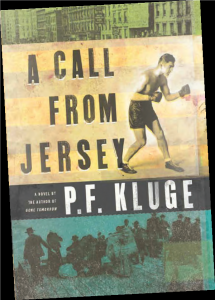 the very nature of estrangement and reconciliation. The Union County hamlet of Berkeley Heights serves as the epicenter for much of A Call from Jersey. Kluge is an unapologetic Jersey Boy with an intimate understanding of the suburban landscape. The story, much of it set in the 1980s, stretches across generations and cultures—and occasionally through the Holland Tunnel—to connect a father and son so preoccupied with how their lives have turned out that they can barely manage an adult conversation when they’re together. Gentle ironies define this relationship. Hans, a seventy-something German- American, is feeling lost in America. His son, George, is a travel writer capable of describing the exotic and mundane with equal aplomb, yet can’t quite put his finger on exactly where, or even what, “home” is. Kluge, it’s worth noting, is the man who supplied the literary inspiration for a pair of iconic films, Dog Day Afternoon and Eddie and the Cruisers. The former, about a Brooklyn bank robbery gone agonizingly awry, starred Al Pacino, fresh off Serpico and his two Godfather triumphs. The latter, about a fictional 1960s Jersey rock band, probably qualifies as a cult classic; certainly that’s true here in the Garden State. From a storytelling standpoint, the most appealing aspect of Eddie—the book and the film—is how effortlessly the narrative moves between past and present. Kluge utilizes time-shifting to great effect again in A Call from Jersey, transporting readers back to the 1930s in order to cobble together a kind of baseline for his characters. There we meet a young Hans, fresh off the boat from Germany, determined to shed his “greenhorn” label and start an American family. As the gap narrows between Hans and George, both timewise and relationship-wise, the author fills in the pertinent details to set up the surprise finish. The most distinctive aspect of A Call from Jersey is how comfortable Kluge is in his two different skins. The book is narrated in the first person, but alternates between Hans and George. The pressure of getting it right for two characters, says Kluge, is outweighed by the advantages of writing in multiple voices. “When you are writing, you are faced with that choice between first and third person,” he explains. “The first person is attractive to young writers because you can put a lot of yourself into the persona of the narrator. That’s fine, except there are certain places you can’t go. You can’t ‘play the field’—you’re a little bit stuck with that one person. The third person offers a larger palette, but you are at a distance from the characters.” “I like the idea of alternating first person narrators, though it’s not without problems. The voices have to be persuasive and can’t be too much alike. That challenged me, but I like it when it works. It combines the advantages of first and third person.” As Kluge’s two main characters stumble toward a long-neglected father-son reunion, they also pursue reunions of their own. George, feeling lost in his late 30s, is staring down the barrel of his 20th with that familiar mix of expectation and anxiety. Kluge, it is worth noting, is headed toward his 50th reunion this fall. In his case, it’s a not-insignificant trip from Gambier, Ohio, where he is Writer in Residence at Kenyon College. “The reason I faithfully attend my high school reunions is to see how lives are turning out,” he explains. “It’s what writers do. At a certain point, elements of competition, appearance and accomplishment dominate reunions. But over time it mellows out. You just want to stare at people and remember and connect. Reunions are about wanting to belong to that same bunch you had in the beginning. Or what’s left of it.”
the very nature of estrangement and reconciliation. The Union County hamlet of Berkeley Heights serves as the epicenter for much of A Call from Jersey. Kluge is an unapologetic Jersey Boy with an intimate understanding of the suburban landscape. The story, much of it set in the 1980s, stretches across generations and cultures—and occasionally through the Holland Tunnel—to connect a father and son so preoccupied with how their lives have turned out that they can barely manage an adult conversation when they’re together. Gentle ironies define this relationship. Hans, a seventy-something German- American, is feeling lost in America. His son, George, is a travel writer capable of describing the exotic and mundane with equal aplomb, yet can’t quite put his finger on exactly where, or even what, “home” is. Kluge, it’s worth noting, is the man who supplied the literary inspiration for a pair of iconic films, Dog Day Afternoon and Eddie and the Cruisers. The former, about a Brooklyn bank robbery gone agonizingly awry, starred Al Pacino, fresh off Serpico and his two Godfather triumphs. The latter, about a fictional 1960s Jersey rock band, probably qualifies as a cult classic; certainly that’s true here in the Garden State. From a storytelling standpoint, the most appealing aspect of Eddie—the book and the film—is how effortlessly the narrative moves between past and present. Kluge utilizes time-shifting to great effect again in A Call from Jersey, transporting readers back to the 1930s in order to cobble together a kind of baseline for his characters. There we meet a young Hans, fresh off the boat from Germany, determined to shed his “greenhorn” label and start an American family. As the gap narrows between Hans and George, both timewise and relationship-wise, the author fills in the pertinent details to set up the surprise finish. The most distinctive aspect of A Call from Jersey is how comfortable Kluge is in his two different skins. The book is narrated in the first person, but alternates between Hans and George. The pressure of getting it right for two characters, says Kluge, is outweighed by the advantages of writing in multiple voices. “When you are writing, you are faced with that choice between first and third person,” he explains. “The first person is attractive to young writers because you can put a lot of yourself into the persona of the narrator. That’s fine, except there are certain places you can’t go. You can’t ‘play the field’—you’re a little bit stuck with that one person. The third person offers a larger palette, but you are at a distance from the characters.” “I like the idea of alternating first person narrators, though it’s not without problems. The voices have to be persuasive and can’t be too much alike. That challenged me, but I like it when it works. It combines the advantages of first and third person.” As Kluge’s two main characters stumble toward a long-neglected father-son reunion, they also pursue reunions of their own. George, feeling lost in his late 30s, is staring down the barrel of his 20th with that familiar mix of expectation and anxiety. Kluge, it is worth noting, is headed toward his 50th reunion this fall. In his case, it’s a not-insignificant trip from Gambier, Ohio, where he is Writer in Residence at Kenyon College. “The reason I faithfully attend my high school reunions is to see how lives are turning out,” he explains. “It’s what writers do. At a certain point, elements of competition, appearance and accomplishment dominate reunions. But over time it mellows out. You just want to stare at people and remember and connect. Reunions are about wanting to belong to that same bunch you had in the beginning. Or what’s left of it.”
 “}e21`perch in the L-shaped first-floor dining room, a table for 10 catty-corner from ours is being readied for guests. Before long, on our other side, a few tables are being pushed together by the busy floor crew. I ask a server how many will be in that party. He shrugs and says, “Either 10 or 12. We’ll find out when they get here.” Party Central in Kenilworth. Boulevard Five72 is fit for celebrations and, on this weekend night, folks everywhere are toasting one another. Servers sashay around the dining spaces briskly and purposefully as the evening promises to crescendo every 15 minutes. Everyone and everything is dressed for the occasion. Approach the restaurant, which sits stately on the main thoroughfare that lends its name to Boulevard Five72, and you might think it looks something like a French chateau. Inside, there’s a bit of a French provincial feel to the décor, dominated by shades of beige and wood tones. It’s an appropriately restful backdrop to the constant-motion dining scene. Snag a bottle of wine from the list and settle in. Chef-partner Scott Snyder’s menu is amenable to almost anything you might be in the mood for. I’d suggest going for one of the value-priced red wines from Spain and letting it do-si-do with the fava bean ravioli nestled in a rustic rabbit ragout. It’s the standout dish on the menu of the moment at Boulevard Five72—a partnership of stalwarts from the south of France that have long earned their stripes at the table. Snyder finishes the starter with an ethereal pouf of truffle scented mascarpone that provides yet another flavor bridge from rabbit to fava to pasta. Or you might consider the crab cake, which here comes accompanied by a coarse chop of a salsa, starring chickpeas
“}e21`perch in the L-shaped first-floor dining room, a table for 10 catty-corner from ours is being readied for guests. Before long, on our other side, a few tables are being pushed together by the busy floor crew. I ask a server how many will be in that party. He shrugs and says, “Either 10 or 12. We’ll find out when they get here.” Party Central in Kenilworth. Boulevard Five72 is fit for celebrations and, on this weekend night, folks everywhere are toasting one another. Servers sashay around the dining spaces briskly and purposefully as the evening promises to crescendo every 15 minutes. Everyone and everything is dressed for the occasion. Approach the restaurant, which sits stately on the main thoroughfare that lends its name to Boulevard Five72, and you might think it looks something like a French chateau. Inside, there’s a bit of a French provincial feel to the décor, dominated by shades of beige and wood tones. It’s an appropriately restful backdrop to the constant-motion dining scene. Snag a bottle of wine from the list and settle in. Chef-partner Scott Snyder’s menu is amenable to almost anything you might be in the mood for. I’d suggest going for one of the value-priced red wines from Spain and letting it do-si-do with the fava bean ravioli nestled in a rustic rabbit ragout. It’s the standout dish on the menu of the moment at Boulevard Five72—a partnership of stalwarts from the south of France that have long earned their stripes at the table. Snyder finishes the starter with an ethereal pouf of truffle scented mascarpone that provides yet another flavor bridge from rabbit to fava to pasta. Or you might consider the crab cake, which here comes accompanied by a coarse chop of a salsa, starring chickpeas  with a cameo of fruit. The punchline of the appetizer? A flash of sriracha sauce, moderated by avocado. As I ate, I thought there’d be nothing wrong with giving that hot-fun sriracha more of a chance to dance around the plate: Between the sweetness of the crab and the earthiness of the chickpeas, the dish has the foundation to stand up to more heat. Go for it. Shrimp punctuate a chunky corn chowder that benefits from a trio of compelling accents: smoky bacon, celery root and a touch of turnip. It’s a solid soup—one worth exploring all summer long—as Snyder and his kitchen crew riff on the shellfish and switch around the accenting vegetables to stay in season. One vegetable I wish they’d switch out is the red flannel hash that’s made from
with a cameo of fruit. The punchline of the appetizer? A flash of sriracha sauce, moderated by avocado. As I ate, I thought there’d be nothing wrong with giving that hot-fun sriracha more of a chance to dance around the plate: Between the sweetness of the crab and the earthiness of the chickpeas, the dish has the foundation to stand up to more heat. Go for it. Shrimp punctuate a chunky corn chowder that benefits from a trio of compelling accents: smoky bacon, celery root and a touch of turnip. It’s a solid soup—one worth exploring all summer long—as Snyder and his kitchen crew riff on the shellfish and switch around the accenting vegetables to stay in season. One vegetable I wish they’d switch out is the red flannel hash that’s made from 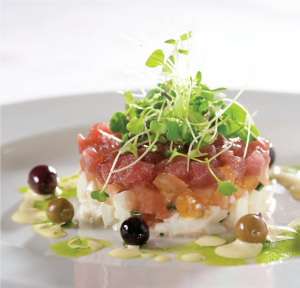 beets and plated with the grilled salmon. The grainy mustard and pesto-like spinach purée adds spot-on counterpoints to the moist fish, but the root vegetable clashes with the salmon. A basic strip loin, meanwhile, showed the kitchen’s precision, and the rich reduction of red wine swirled on the plate was all the steak needed. But a haystack of onions that looked more frizzled than frittered, as the menu described, proved an amiable companion, so we gobbled it all up. Why not? Steak and onions are a heavenly marriage. As are shellfish and arborio, the basis for Boulevard Five72’s risotto. It’s heavy on the truffle in its lobster broth, which I know draws applause from a multitude of
beets and plated with the grilled salmon. The grainy mustard and pesto-like spinach purée adds spot-on counterpoints to the moist fish, but the root vegetable clashes with the salmon. A basic strip loin, meanwhile, showed the kitchen’s precision, and the rich reduction of red wine swirled on the plate was all the steak needed. But a haystack of onions that looked more frizzled than frittered, as the menu described, proved an amiable companion, so we gobbled it all up. Why not? Steak and onions are a heavenly marriage. As are shellfish and arborio, the basis for Boulevard Five72’s risotto. It’s heavy on the truffle in its lobster broth, which I know draws applause from a multitude of  diners impressed by the presence of extreme luxury. I’m a little less drawn to the use of truffle oil than most; I think it overwhelms shellfish, in particular, keeping its unique character in the closet. We added character to our entrées in the form of two sides well worth the supplement. Spanish chips are one of the planet’s most enjoyable foods. Here the thick-cut potato slices are crisp and crunchy and judiciously dusted with pimenton and salt. Good greens are spiced just right—and right for just about any of Boulevard Five72’s entrées. My suggestion re the greens? Serve with a wedge of lemon to give diners the option of adding a little zing as desired. There’s citrus aplenty in the steamed pudding cake, an elegant finale served with a side of blackberry sorbet. An updated strawberry shortcake was underscored by a faint drop of balsamic vinegar and partnered with a creamy, subtle basil gelato. A favorite at my table was the dark chocolate-caramel tart, with its delightful sprinkling of fleur de sel and a cloud of mascarpone mousse offered as a finishing flourish. As we wound down our dinner, servers were gearing up for yet another large-party table. Amid all the activity, you might notice a slight slow-down between appetizers and main courses, and maybe your entrée plates are left to sit a tad too long after you’ve set down knife and fork. But the crew, largely, performs admirably. The crescendos continue at Boulevard Five72. EDGE
diners impressed by the presence of extreme luxury. I’m a little less drawn to the use of truffle oil than most; I think it overwhelms shellfish, in particular, keeping its unique character in the closet. We added character to our entrées in the form of two sides well worth the supplement. Spanish chips are one of the planet’s most enjoyable foods. Here the thick-cut potato slices are crisp and crunchy and judiciously dusted with pimenton and salt. Good greens are spiced just right—and right for just about any of Boulevard Five72’s entrées. My suggestion re the greens? Serve with a wedge of lemon to give diners the option of adding a little zing as desired. There’s citrus aplenty in the steamed pudding cake, an elegant finale served with a side of blackberry sorbet. An updated strawberry shortcake was underscored by a faint drop of balsamic vinegar and partnered with a creamy, subtle basil gelato. A favorite at my table was the dark chocolate-caramel tart, with its delightful sprinkling of fleur de sel and a cloud of mascarpone mousse offered as a finishing flourish. As we wound down our dinner, servers were gearing up for yet another large-party table. Amid all the activity, you might notice a slight slow-down between appetizers and main courses, and maybe your entrée plates are left to sit a tad too long after you’ve set down knife and fork. But the crew, largely, performs admirably. The crescendos continue at Boulevard Five72. EDGE



 Is it too much to ask that people not buy their first saltwater aquarium along with the fishes, live rock, and invertebrates all on their first visit to a pet shop? I experiment constantly, and found the very best aquarium I ever kept was limited to live rocks for a whole year before I put any fish in. I always tell my friends to “grow something” in the water first. No matter how many products are available to help start aquariums quickly, the aquarist’s best friend starting out is time. • Patronize the local brick & mortar pet shop and—I’ll say it again—beware of bargains. Even though it may not be able to compete with Internet prices, your local pet shop was likely opened as a labor of love and expertise; these folks are looking to make a living, not a fortune. Pet shop insiders will be the most generous of people with their time, experience, and good advice. However, be aware of the fishmonger who repeats whatever it is you just said, who agrees with a wayward premise. (Yeah! I always feed live guppies to all my cichlids.) If the advice smells like a bucket of week-old dead fish, this is what you’ll probably have next week if you buy from this guy. I only thank my lucky stars that Clownfish are now being commercially farmed at facilities like the ORA hatchery complex in Ft. Pierce, Florida and need not be collected from the wild. Had Nemo been an equally adorable Banggai Cardinalfish, collection pressures on the small wild populations would definitely have put this species at serious risk, even though it too is able to be bred in captivity; just not enough to supply the demand for fish that a movie like Nemo would generate. Although some of us in the industry wrestle with our consciences, in the end we believe that every person who begins a saltwater aquarium—regardless of the outcome— gains new respect and appreciation for our delicate planet. I can’t think of any other exercise that shows us in such acute detail just how difficult it can be to keep a small being living under our care. Perhaps if more people dedicated themselves to maintaining flourishing saltwater tanks, the Gulf of Mexico would still support a shrimping industry, global warming would be addressed in a more proactive way, and we would realize that the line between the coral reefs of Fiji and the Arthur Kill can be an astoundingly fine one. EDGE
Is it too much to ask that people not buy their first saltwater aquarium along with the fishes, live rock, and invertebrates all on their first visit to a pet shop? I experiment constantly, and found the very best aquarium I ever kept was limited to live rocks for a whole year before I put any fish in. I always tell my friends to “grow something” in the water first. No matter how many products are available to help start aquariums quickly, the aquarist’s best friend starting out is time. • Patronize the local brick & mortar pet shop and—I’ll say it again—beware of bargains. Even though it may not be able to compete with Internet prices, your local pet shop was likely opened as a labor of love and expertise; these folks are looking to make a living, not a fortune. Pet shop insiders will be the most generous of people with their time, experience, and good advice. However, be aware of the fishmonger who repeats whatever it is you just said, who agrees with a wayward premise. (Yeah! I always feed live guppies to all my cichlids.) If the advice smells like a bucket of week-old dead fish, this is what you’ll probably have next week if you buy from this guy. I only thank my lucky stars that Clownfish are now being commercially farmed at facilities like the ORA hatchery complex in Ft. Pierce, Florida and need not be collected from the wild. Had Nemo been an equally adorable Banggai Cardinalfish, collection pressures on the small wild populations would definitely have put this species at serious risk, even though it too is able to be bred in captivity; just not enough to supply the demand for fish that a movie like Nemo would generate. Although some of us in the industry wrestle with our consciences, in the end we believe that every person who begins a saltwater aquarium—regardless of the outcome— gains new respect and appreciation for our delicate planet. I can’t think of any other exercise that shows us in such acute detail just how difficult it can be to keep a small being living under our care. Perhaps if more people dedicated themselves to maintaining flourishing saltwater tanks, the Gulf of Mexico would still support a shrimping industry, global warming would be addressed in a more proactive way, and we would realize that the line between the coral reefs of Fiji and the Arthur Kill can be an astoundingly fine one. EDGE 
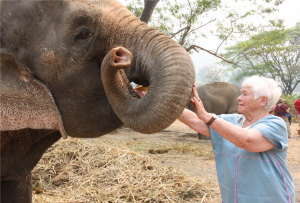 As a child I had no interest in Nancy Drew, or Jo of Little Women. Pippi Longstocking had yet to appear, but even had she arrived a few decades sooner, I’m sure I would have ignored her as well. For me, the very center of my imaginary world was Toomai the Elephant Boy. Toomai of the Elephants was just one of Rudyard Kipling’s marvelous contributions to childhood. Along with millions of other children in any of 70 languages, I was hooked by the Just So Stories in general, by Toomai in particular. Toomai who bullied his elephant. Who shouted commands and stamped his bare foot when his elephant dared not to obey him on the instant.
As a child I had no interest in Nancy Drew, or Jo of Little Women. Pippi Longstocking had yet to appear, but even had she arrived a few decades sooner, I’m sure I would have ignored her as well. For me, the very center of my imaginary world was Toomai the Elephant Boy. Toomai of the Elephants was just one of Rudyard Kipling’s marvelous contributions to childhood. Along with millions of other children in any of 70 languages, I was hooked by the Just So Stories in general, by Toomai in particular. Toomai who bullied his elephant. Who shouted commands and stamped his bare foot when his elephant dared not to obey him on the instant. 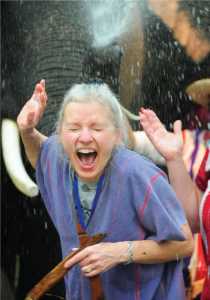 Atop his elephant, Toomai rode fearlessly through the jungles of India. Together, child and beast were impervious to all authority of his elders. Toomai and his elephant. The stuff of dreams! So it was that when I first read about Patara Farm in Thailand—and its program entitled “Own an Elephant for a Day”—I knew I had no choice. Patara Farm is located about an hour’s jeep ride outside of Chiang Mai in Northern Thailand. The owner of the farm and the inspiration for the program is a soft-spoken, 37-year-old conservationist, named Theerapat Trungprakan. (“Please, just call me Pat.”) My day of elephant ownership begins in the cool of the morning. Along with seven other would-be elephant owners (groups are limited to eight), I arrive at the 100-acre property carved out of lush woodlands and tropical verdure. Patara is home for Pat, his wife, Dow, three very young sons and 28 elephants. It’s a huge undertaking. To help him, Pat has a staff of 18 local boys, one of whom leads us from the road where our jeeps were parked, along an improvised narrow boardwalk, across a stretch of marsh to a thatched shelter, where Pat greets us. Every inch the attentive host, Pat ushers us to seats on hand-hewn benches. As we help ourselves to fruits and juices, he introduces himself and his life’s work, beginning by sketching for us the story of how elephants were domesticated 2,500 years ago in India, where they were first captured in the wild, tamed and trained. Generation after generation of these massive mammals were bred for docility, agility and robust health. The art—and what an art it is!—of training an elephant for a lifetime of productive work was handed down, father-to-son, and about 500 years ago was passed from India to Thailand. Pat tosses in a few elephant facts: An elephant has a life span of 60 to 70 years.
Atop his elephant, Toomai rode fearlessly through the jungles of India. Together, child and beast were impervious to all authority of his elders. Toomai and his elephant. The stuff of dreams! So it was that when I first read about Patara Farm in Thailand—and its program entitled “Own an Elephant for a Day”—I knew I had no choice. Patara Farm is located about an hour’s jeep ride outside of Chiang Mai in Northern Thailand. The owner of the farm and the inspiration for the program is a soft-spoken, 37-year-old conservationist, named Theerapat Trungprakan. (“Please, just call me Pat.”) My day of elephant ownership begins in the cool of the morning. Along with seven other would-be elephant owners (groups are limited to eight), I arrive at the 100-acre property carved out of lush woodlands and tropical verdure. Patara is home for Pat, his wife, Dow, three very young sons and 28 elephants. It’s a huge undertaking. To help him, Pat has a staff of 18 local boys, one of whom leads us from the road where our jeeps were parked, along an improvised narrow boardwalk, across a stretch of marsh to a thatched shelter, where Pat greets us. Every inch the attentive host, Pat ushers us to seats on hand-hewn benches. As we help ourselves to fruits and juices, he introduces himself and his life’s work, beginning by sketching for us the story of how elephants were domesticated 2,500 years ago in India, where they were first captured in the wild, tamed and trained. Generation after generation of these massive mammals were bred for docility, agility and robust health. The art—and what an art it is!—of training an elephant for a lifetime of productive work was handed down, father-to-son, and about 500 years ago was passed from India to Thailand. Pat tosses in a few elephant facts: An elephant has a life span of 60 to 70 years.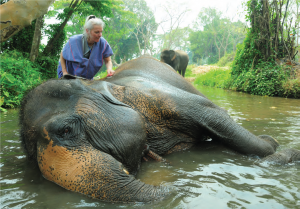 Female elephants often give birth right up through the age of 50. A newborn weighs in at about 260 pounds, delivered after 22 months of gestation. A full-grown elephant can weigh as much as 11,000 pounds and will stand as high as 10 feet at the shoulder. Elephants are herbivores, who every day pack away 350 to 400 pounds of plant material. Sugar cane and bananas rank high on their list of Favorite Foods. As we listen, we gaze out into the surrounding woodlands, where elephants stroll by at their leisure, thoughtfully munching untidy mouthfuls of shrubbery. The warm, moist air carries a strong animal musk. It smells marvelous. It bespeaks nature unbounded. Nature in the raw; somehow it conveys an elemental certainty. It’s as if, however briefly, we are transported beyond the trivia, the excess and, yes, the absurdity of human events into a realm of uncorrupted truth. To call Pat impassioned on the subject of elephants is a massive understatement. His understanding of these extraordinary animals is exceeded only by the love and respect he bears them. He tells us that there was a time when elephants roamed vast areas of Asia and Africa— before man made fire, before man stood upright, before farmers farmed. Their numbers were legion.
Female elephants often give birth right up through the age of 50. A newborn weighs in at about 260 pounds, delivered after 22 months of gestation. A full-grown elephant can weigh as much as 11,000 pounds and will stand as high as 10 feet at the shoulder. Elephants are herbivores, who every day pack away 350 to 400 pounds of plant material. Sugar cane and bananas rank high on their list of Favorite Foods. As we listen, we gaze out into the surrounding woodlands, where elephants stroll by at their leisure, thoughtfully munching untidy mouthfuls of shrubbery. The warm, moist air carries a strong animal musk. It smells marvelous. It bespeaks nature unbounded. Nature in the raw; somehow it conveys an elemental certainty. It’s as if, however briefly, we are transported beyond the trivia, the excess and, yes, the absurdity of human events into a realm of uncorrupted truth. To call Pat impassioned on the subject of elephants is a massive understatement. His understanding of these extraordinary animals is exceeded only by the love and respect he bears them. He tells us that there was a time when elephants roamed vast areas of Asia and Africa— before man made fire, before man stood upright, before farmers farmed. Their numbers were legion.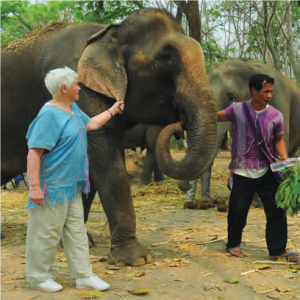 Today, it is estimated that in the whole world there are probably no more than 52,000 left in the wild. Every passing year sees their numbers decline. Where once they were used as beasts of burden, as transport, as invaluable aids in forestry, in heavy labor of every kind, today they are used only in ceremonial pageants and in a few instances as tourist attractions. “In 20 years, maybe less, elephants could become extinct. Except in a zoo, they will cease to exist.” Pat pauses, then resumes. “Extinction,” he tells us, “is forever.” He turns and we read those very words on the back of his bright red Tshirt. Each of us is paired up with an elephant. Ours for the day. I’m introduced to Nui, a 14-year old female. Tethered by one massive leg she stands in the shade of a giant mango tree. I approach with delight generously mixed with total ignorance. Meet a dog, hold out your open palm. Meet a horse, speak softly, move slowly, stroke the neck and muzzle. But meet an elephant? Toomai, help me! I reach up and run my hand over the crinkly skin.
Today, it is estimated that in the whole world there are probably no more than 52,000 left in the wild. Every passing year sees their numbers decline. Where once they were used as beasts of burden, as transport, as invaluable aids in forestry, in heavy labor of every kind, today they are used only in ceremonial pageants and in a few instances as tourist attractions. “In 20 years, maybe less, elephants could become extinct. Except in a zoo, they will cease to exist.” Pat pauses, then resumes. “Extinction,” he tells us, “is forever.” He turns and we read those very words on the back of his bright red Tshirt. Each of us is paired up with an elephant. Ours for the day. I’m introduced to Nui, a 14-year old female. Tethered by one massive leg she stands in the shade of a giant mango tree. I approach with delight generously mixed with total ignorance. Meet a dog, hold out your open palm. Meet a horse, speak softly, move slowly, stroke the neck and muzzle. But meet an elephant? Toomai, help me! I reach up and run my hand over the crinkly skin. Surprise! It’s covered with short, black, bristly hairs that are all but invisible unless you’re standing very close. She’s so big that even on tiptoe I can hardly reach higher than her eyes. By way of introduction I feed her about 20 pounds of corn cobs and sugarcane stalks provided by Tang, one of Pat’s helpers. It’s a tricky business, because each offering has to be poked directly into her mouth, which is obstructed by her trunk which curls and uncurls in unpredictable ways. “Good Nui,” I tell her, “good girl,” forgetting that though English is my language, her language is Thai. As the sun climbs toward the zenith of noon, Pat shows us how to command our elephants to lie down in order to sweep their backs free of dirt, leaves and twigs with a fistful of palm fronds. Once tidied up, I offer Nui the palm fronds, which she consumes in a single messy mouthful. Bath time! The approved technique by which one moves one’s elephant out from under a mango tree down to the river some 200 yards away consists of taking a firm grip on the edge of one ear and telling her “My-my-my-my,” the Thai word for “Come.” Slowly but surely, we progress to the river’s edge. There I release my hold, step aside and Nui wades in to join the other seven elephants. It’s playtime. With much swooshing and spraying, much splashing and squirting, all the elephants—along with their owners-for-the day—have a watery free-for-all.
Surprise! It’s covered with short, black, bristly hairs that are all but invisible unless you’re standing very close. She’s so big that even on tiptoe I can hardly reach higher than her eyes. By way of introduction I feed her about 20 pounds of corn cobs and sugarcane stalks provided by Tang, one of Pat’s helpers. It’s a tricky business, because each offering has to be poked directly into her mouth, which is obstructed by her trunk which curls and uncurls in unpredictable ways. “Good Nui,” I tell her, “good girl,” forgetting that though English is my language, her language is Thai. As the sun climbs toward the zenith of noon, Pat shows us how to command our elephants to lie down in order to sweep their backs free of dirt, leaves and twigs with a fistful of palm fronds. Once tidied up, I offer Nui the palm fronds, which she consumes in a single messy mouthful. Bath time! The approved technique by which one moves one’s elephant out from under a mango tree down to the river some 200 yards away consists of taking a firm grip on the edge of one ear and telling her “My-my-my-my,” the Thai word for “Come.” Slowly but surely, we progress to the river’s edge. There I release my hold, step aside and Nui wades in to join the other seven elephants. It’s playtime. With much swooshing and spraying, much splashing and squirting, all the elephants—along with their owners-for-the day—have a watery free-for-all.  Pat and his helpers provide us with buckets and scrub brushes; when our charges lie down, we are shown how to baste them and scrub them, an exercise which Nui and I enjoy in equal measure. At last, my Toomai moment arrives! It’s time to climb on board. Pat demonstrates four different ways of handling it. As I recall, Toomai would say the word and his elephant would wrap his trunk around him and lift him onto his head. But that method is not included in the four styles we are shown. I choose what appears to be the easiest and in so doing, I find there is no “easy” (much less “easiest”). Still, I make it onto Nui’s head by standing on her curled front leg and hauling myself up by shamelessly using her ear as a handhold. Once seated, Toomai-like, I tuck my bare feet one foot behind each ear, and speak the magic words that Nui clearly understands. It’s “Sai” for left and “Kwa” for right. We fall into parade formation and, with Pat in the lead, we make our way, slowly and stately, through a mile or so of woodlands from which we emerge in a glen into which tumbles a sparkling waterfall—the perfect antidote for Thailand’s torrid temperatures. A delectable picnic lunch of unidentifiable Thai dishes has been laid out for us atop layers of banana leaves. While we set to, our elephants gambol in the water, shooting trunksful of water at each other, not caring one whit if they soak their owners in the process. It’s late afternoon by the time we make our way back to Patara Farm. I’m soaked, exhausted, exhilarated. Nui and I have bonded. She kneels down so I can slither off her and in farewell I stroke her trunk, whispering endearments. “Lah gorn, Nui” I tell her. Remembering my Kipling, I know full well that Nui will never forget me. It goes without saying that I will never forget Nui. We bid Pat farewell. Our group heads for the jeeps and I think to myself, Well, Toomai, at long last, I made it! EDGE
Pat and his helpers provide us with buckets and scrub brushes; when our charges lie down, we are shown how to baste them and scrub them, an exercise which Nui and I enjoy in equal measure. At last, my Toomai moment arrives! It’s time to climb on board. Pat demonstrates four different ways of handling it. As I recall, Toomai would say the word and his elephant would wrap his trunk around him and lift him onto his head. But that method is not included in the four styles we are shown. I choose what appears to be the easiest and in so doing, I find there is no “easy” (much less “easiest”). Still, I make it onto Nui’s head by standing on her curled front leg and hauling myself up by shamelessly using her ear as a handhold. Once seated, Toomai-like, I tuck my bare feet one foot behind each ear, and speak the magic words that Nui clearly understands. It’s “Sai” for left and “Kwa” for right. We fall into parade formation and, with Pat in the lead, we make our way, slowly and stately, through a mile or so of woodlands from which we emerge in a glen into which tumbles a sparkling waterfall—the perfect antidote for Thailand’s torrid temperatures. A delectable picnic lunch of unidentifiable Thai dishes has been laid out for us atop layers of banana leaves. While we set to, our elephants gambol in the water, shooting trunksful of water at each other, not caring one whit if they soak their owners in the process. It’s late afternoon by the time we make our way back to Patara Farm. I’m soaked, exhausted, exhilarated. Nui and I have bonded. She kneels down so I can slither off her and in farewell I stroke her trunk, whispering endearments. “Lah gorn, Nui” I tell her. Remembering my Kipling, I know full well that Nui will never forget me. It goes without saying that I will never forget Nui. We bid Pat farewell. Our group heads for the jeeps and I think to myself, Well, Toomai, at long last, I made it! EDGE 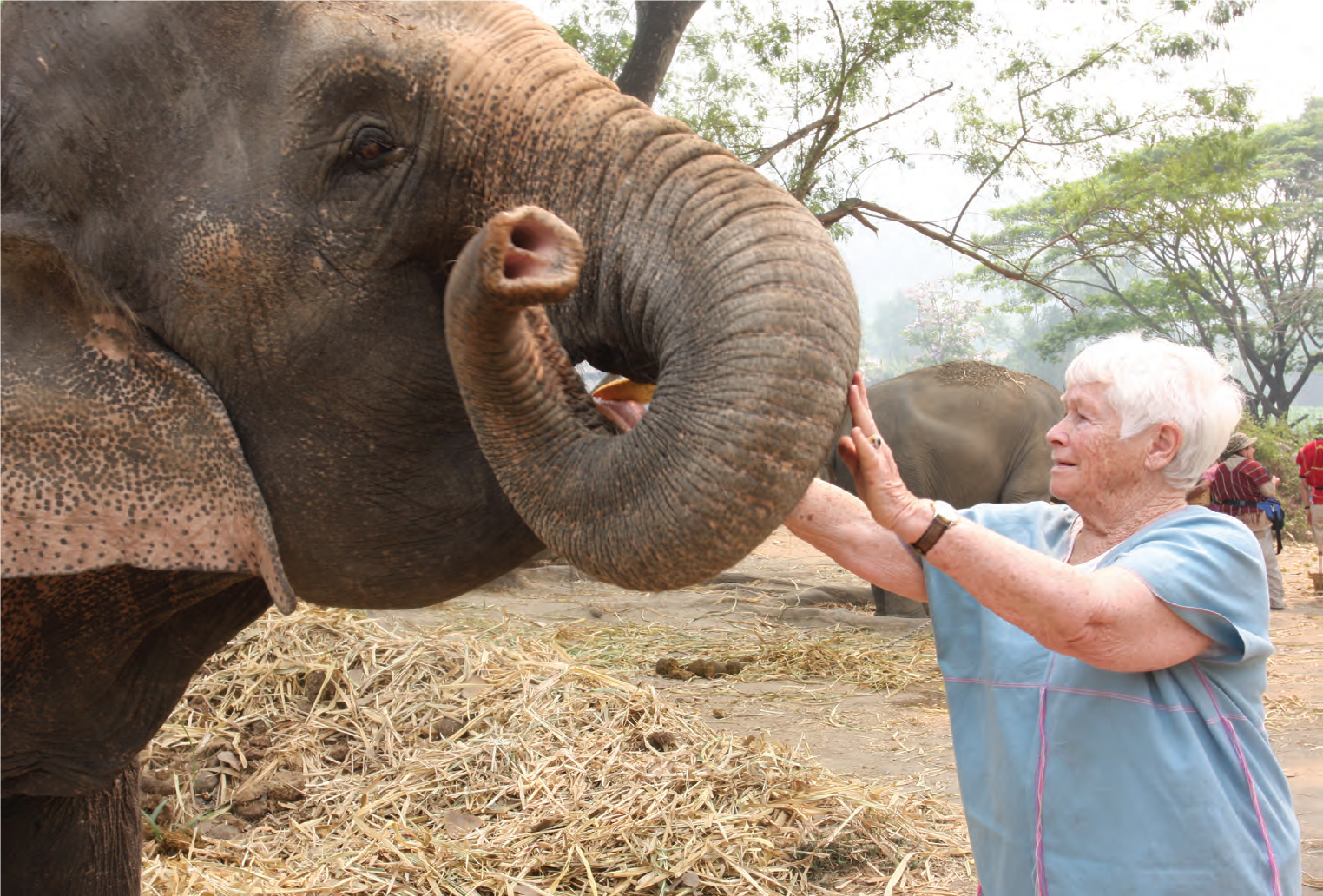
 The casualty list in this epic, microscopic battle being waged within your body includes a runny nose, scratchy throat, watery eyes, itchy hives and, in the most serious cases, a potentially lifethreatening asthma attack. “Pet dander can activate cells in the immune system,” confirms Samuel D. Kahnowitz, MD, FCCP, FACP, Chief of Pulmonary Medicine and Medical Director of Respiratory Therapy at Trinitas Regional Medical Center. “The body then makes inflammatory substances that constrict the muscles around the airway, and cause swelling on the inside of the airways, making it harder to breathe.” Reactions to pet allergies account for an increasing number of doctor and emergency room visits in this country, so the medical community is taking this trend seriously. To a layman, at least, the obvious question is, “Has pet dander somehow gotten ‘worse’ or are people becoming more sensitive to it?” Actually the same question could be asked about our food and environment—allergies in general seem to be more prevalent, and more serious, than ever. It turns out that we may be the problem. Indeed studies suggest that our country’s obsession with cleanliness may be to blame for creating hypersensitive immune systems, which now react to harmless things around us. “Our environment has improved, so we don’t have to worry about fighting off dangerous parasites,” explains Richard J. Bukosky, MD, an allergist in Linden. “The allergic antibody doesn’t have a whole lot to do. It starts to ‘pick’ on things that we’re exposed to in the environment that are completely harmless.” While there is still no permanent cure for pet allergies, there are plenty of options available for minimizing their effects on your life—and many of them don’t require finding a new home for Fluffy or Fido: Minimize exposure to pets. The less exposure to the offending pet, the better. Opting to find a new home for your pet may help in the long run, though it can take up to 20 weeks after the pet leaves before the allergen levels really dissipate.
The casualty list in this epic, microscopic battle being waged within your body includes a runny nose, scratchy throat, watery eyes, itchy hives and, in the most serious cases, a potentially lifethreatening asthma attack. “Pet dander can activate cells in the immune system,” confirms Samuel D. Kahnowitz, MD, FCCP, FACP, Chief of Pulmonary Medicine and Medical Director of Respiratory Therapy at Trinitas Regional Medical Center. “The body then makes inflammatory substances that constrict the muscles around the airway, and cause swelling on the inside of the airways, making it harder to breathe.” Reactions to pet allergies account for an increasing number of doctor and emergency room visits in this country, so the medical community is taking this trend seriously. To a layman, at least, the obvious question is, “Has pet dander somehow gotten ‘worse’ or are people becoming more sensitive to it?” Actually the same question could be asked about our food and environment—allergies in general seem to be more prevalent, and more serious, than ever. It turns out that we may be the problem. Indeed studies suggest that our country’s obsession with cleanliness may be to blame for creating hypersensitive immune systems, which now react to harmless things around us. “Our environment has improved, so we don’t have to worry about fighting off dangerous parasites,” explains Richard J. Bukosky, MD, an allergist in Linden. “The allergic antibody doesn’t have a whole lot to do. It starts to ‘pick’ on things that we’re exposed to in the environment that are completely harmless.” While there is still no permanent cure for pet allergies, there are plenty of options available for minimizing their effects on your life—and many of them don’t require finding a new home for Fluffy or Fido: Minimize exposure to pets. The less exposure to the offending pet, the better. Opting to find a new home for your pet may help in the long run, though it can take up to 20 weeks after the pet leaves before the allergen levels really dissipate.  If your dog or cat is here to stay, make sure to keep it out of your bedroom—the place where you spend most of your time—and wash your hands thoroughly after you’ve touched your pet. Weekly bathing or grooming (done by someone other than the person with the allergies) may also help keep allergens at bay. Keep it clean. Daily vacuuming and washing-down of surfaces can help clear some of the allergens—especially if you use a vacuum with a HEPA filter that can trap the tiny particles. Removing carpeting, drapery, stuffed toys and other soft fabrics can help reduce the number of places where pet dander can become trapped. “I really push for them to allergy-proof the bedroom—get rid of the carpeting and the animals, get a dehumidifier and a HEPA filter, avoid down comforters and get allergy-proofing casing for the pillows and mattresses,” Dr. Bukosky says. Consider that it might not be your pet. Even if allergy testing turns up an allergic reaction, it may not actually be your animal that’s causing the wheezing. “Dogs roam around, and it might not be the dog himself—it may be an irritant he’s picking up outside, like wood chips or rag weed,” says Dr. Kahnowitz. Take antihistamines. Newer over-the-counter formulations, like Zyrtec and Claritin, are more potent and less likely to cause drowsiness and other unpleasant side effects. Try a more serious approach. Doctors have become more aggressive in treating allergies, often including steroids in the treatment plan. “We’re pushing steroids more,” Dr. Bukosky says. “We used to use a montelukast (Singulair) a lot, but we’ve started to use inhaled steroids more—for nasal allergies, internasal steroids are a good option.” Of course, pet allergies can also be treated with a program of allergy immunizations. “We push for immunizations, which make it less likely that you’ll develop asthma,” says Dr. Bukosky. The regimens generally start with weekly shots, then as the treatment progresses, patients can go longer and longer between injections. Finally, there’s the do-nothing approach. These are the people who claim they have built an immunity to their animal. Is this really possible? The answer is yes…and no. Dr. Bukosky warns that what these pet owners believe to be happening may not actually be the case. “With daily exposure to the pet, a person with allergies may be having mild allergy-like attacks each day that use up the IgE antibody—just not enough to cause symptoms,” he says. “Then the child goes off to college, or is away from the pet for a long vacation, and has an asthma attack. So you may become ‘used to’ your pet, but you have to be in constant contact with it to avoid a serious reaction.”
If your dog or cat is here to stay, make sure to keep it out of your bedroom—the place where you spend most of your time—and wash your hands thoroughly after you’ve touched your pet. Weekly bathing or grooming (done by someone other than the person with the allergies) may also help keep allergens at bay. Keep it clean. Daily vacuuming and washing-down of surfaces can help clear some of the allergens—especially if you use a vacuum with a HEPA filter that can trap the tiny particles. Removing carpeting, drapery, stuffed toys and other soft fabrics can help reduce the number of places where pet dander can become trapped. “I really push for them to allergy-proof the bedroom—get rid of the carpeting and the animals, get a dehumidifier and a HEPA filter, avoid down comforters and get allergy-proofing casing for the pillows and mattresses,” Dr. Bukosky says. Consider that it might not be your pet. Even if allergy testing turns up an allergic reaction, it may not actually be your animal that’s causing the wheezing. “Dogs roam around, and it might not be the dog himself—it may be an irritant he’s picking up outside, like wood chips or rag weed,” says Dr. Kahnowitz. Take antihistamines. Newer over-the-counter formulations, like Zyrtec and Claritin, are more potent and less likely to cause drowsiness and other unpleasant side effects. Try a more serious approach. Doctors have become more aggressive in treating allergies, often including steroids in the treatment plan. “We’re pushing steroids more,” Dr. Bukosky says. “We used to use a montelukast (Singulair) a lot, but we’ve started to use inhaled steroids more—for nasal allergies, internasal steroids are a good option.” Of course, pet allergies can also be treated with a program of allergy immunizations. “We push for immunizations, which make it less likely that you’ll develop asthma,” says Dr. Bukosky. The regimens generally start with weekly shots, then as the treatment progresses, patients can go longer and longer between injections. Finally, there’s the do-nothing approach. These are the people who claim they have built an immunity to their animal. Is this really possible? The answer is yes…and no. Dr. Bukosky warns that what these pet owners believe to be happening may not actually be the case. “With daily exposure to the pet, a person with allergies may be having mild allergy-like attacks each day that use up the IgE antibody—just not enough to cause symptoms,” he says. “Then the child goes off to college, or is away from the pet for a long vacation, and has an asthma attack. So you may become ‘used to’ your pet, but you have to be in constant contact with it to avoid a serious reaction.”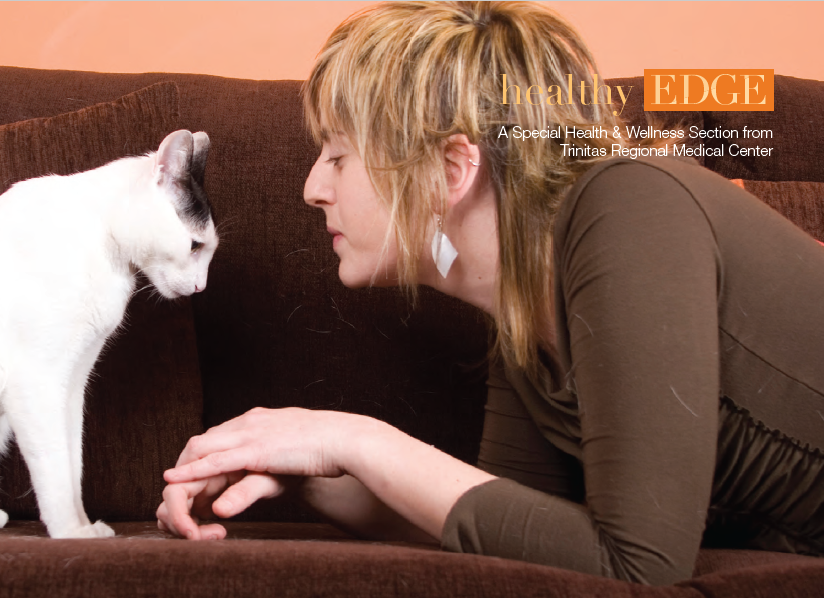
 Heart attack victims who have pets tend to live longer. Watching fish in a tank can lower blood pressure. In senior adults, canine companionship can keep mental health complications from turning into physical deterioration. Indeed, considerable evidence supports the healing potential of pet therapy. There is plenty of history to back up the power of pet therapy, too. The first documented account of animal therapy dates back to the 9th century in Gheel, Belgium, where farm animals were used to help disabled people cope. In Washington, D.C. in 1919, psychiatric patients at St. Elizabeth’s Hospital had dogs available for their recognized therapeutic value. And in the decades since, the medical community has come to embrace this interactive approach to improving the quality of life, both for patients in recovery and for those whose health may be in decline. For the record, today the more politically correct term for pet-related therapy is either Animal-Assisted Activities (AAA) or Animal-Assisted Therapy (AAT). AAA is a more casual meet-and-greet approach to hands-on contact between patients and pets, while AAT is a more formal clinical approach with patients who may be challenged physically, emotionally, or mentally.
Heart attack victims who have pets tend to live longer. Watching fish in a tank can lower blood pressure. In senior adults, canine companionship can keep mental health complications from turning into physical deterioration. Indeed, considerable evidence supports the healing potential of pet therapy. There is plenty of history to back up the power of pet therapy, too. The first documented account of animal therapy dates back to the 9th century in Gheel, Belgium, where farm animals were used to help disabled people cope. In Washington, D.C. in 1919, psychiatric patients at St. Elizabeth’s Hospital had dogs available for their recognized therapeutic value. And in the decades since, the medical community has come to embrace this interactive approach to improving the quality of life, both for patients in recovery and for those whose health may be in decline. For the record, today the more politically correct term for pet-related therapy is either Animal-Assisted Activities (AAA) or Animal-Assisted Therapy (AAT). AAA is a more casual meet-and-greet approach to hands-on contact between patients and pets, while AAT is a more formal clinical approach with patients who may be challenged physically, emotionally, or mentally. her five-year old beagle, Murphy. Both have been certified by St. Hubert’s. Reynolds recognized early on that Murphy had the necessary qualifications, since he had become an ambassador of goodwill in her own neighborhood, particularly among senior residents. Currently, the psych department’s group sessions are held at Trinitas, with special visits paid to the on-site nursing facility—the domain of Harley, another gifted pet “therapist.” The adult outpatient groups are often organized according to particular challenge. Two of the currently active groups are focusing on anxiety relief and partial vs. unconditional love. Reynolds refers to these sessions as her “puppy love” groups. “I really just knew I had to share him,” Reynolds says of Murphy, who wears a hospital staff photo ID badge, as do all the therapy dogs. It is attached to his favorite bandana; Reynolds realized that Murphy needed a work wardrobe and provided it. Murphy is typically on the job two or three days a month. A typical day includes sessions with two to three groups, each with five to ten patients. Patients are not the only recipients of Murphy’s healing powers. Staff members having a bad day often drop by for a visit and a pet. Murphy is happy to oblige. “No stranger is too strange for Murphy,” Reynolds says.
her five-year old beagle, Murphy. Both have been certified by St. Hubert’s. Reynolds recognized early on that Murphy had the necessary qualifications, since he had become an ambassador of goodwill in her own neighborhood, particularly among senior residents. Currently, the psych department’s group sessions are held at Trinitas, with special visits paid to the on-site nursing facility—the domain of Harley, another gifted pet “therapist.” The adult outpatient groups are often organized according to particular challenge. Two of the currently active groups are focusing on anxiety relief and partial vs. unconditional love. Reynolds refers to these sessions as her “puppy love” groups. “I really just knew I had to share him,” Reynolds says of Murphy, who wears a hospital staff photo ID badge, as do all the therapy dogs. It is attached to his favorite bandana; Reynolds realized that Murphy needed a work wardrobe and provided it. Murphy is typically on the job two or three days a month. A typical day includes sessions with two to three groups, each with five to ten patients. Patients are not the only recipients of Murphy’s healing powers. Staff members having a bad day often drop by for a visit and a pet. Murphy is happy to oblige. “No stranger is too strange for Murphy,” Reynolds says.
 Editor Zack Burgess managed to grab 20 solid minutes with Beth at the “tail end” of the publicity tour for her new book, Oh My Dog: How to choose, train, groom, nurture, feed and care for your new best friend (Gallery Books). Zack covered a lot of ground in his Q&A, yet he never got to the question Letterman posed to her on national television: Why Howard? Turns out she kind of answered it anyway. The spokesperson for North Shore Animal League America, Beth wouldn’t tell us how her book ends. Spoiler alert…the woman ends up taking care of the dog!
Editor Zack Burgess managed to grab 20 solid minutes with Beth at the “tail end” of the publicity tour for her new book, Oh My Dog: How to choose, train, groom, nurture, feed and care for your new best friend (Gallery Books). Zack covered a lot of ground in his Q&A, yet he never got to the question Letterman posed to her on national television: Why Howard? Turns out she kind of answered it anyway. The spokesperson for North Shore Animal League America, Beth wouldn’t tell us how her book ends. Spoiler alert…the woman ends up taking care of the dog!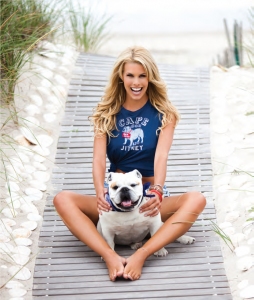
 BOS: I believe in love at first sight. Just know what you’re looking for. Assess your lifestyle, as I mentioned before. When you go into a shelter, if you have a big house with a beautiful yard or access to a park, you might want to get a bigger breed. Or if you live in a one-bedroom apartment, you might not want to get that Rottweiler or Bernese Mountain dog; you might want to go for a smaller dog. Talk to the adoption counselor, determine the right fit for your lifestyle, and then when you spend time with a dog and make eye contact and fall in love, you’re also going to know it’s the right one to bring home.
BOS: I believe in love at first sight. Just know what you’re looking for. Assess your lifestyle, as I mentioned before. When you go into a shelter, if you have a big house with a beautiful yard or access to a park, you might want to get a bigger breed. Or if you live in a one-bedroom apartment, you might not want to get that Rottweiler or Bernese Mountain dog; you might want to go for a smaller dog. Talk to the adoption counselor, determine the right fit for your lifestyle, and then when you spend time with a dog and make eye contact and fall in love, you’re also going to know it’s the right one to bring home.
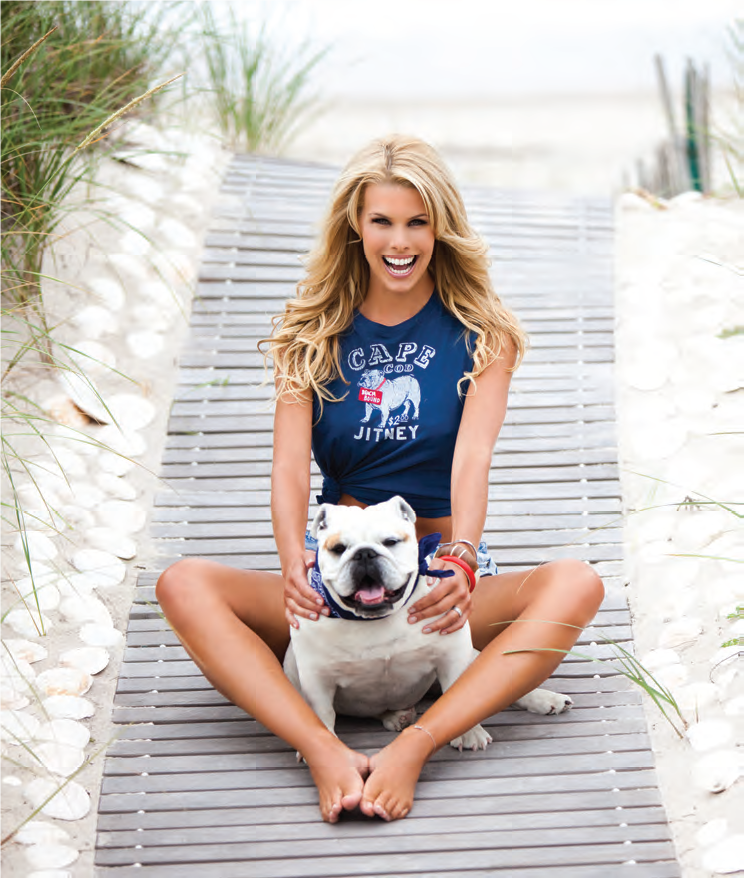
 Compounding this dilemma is the fact that dogs rarely display the pain they are experiencing at home on a trip to the animal hospital. Their adrenaline is pumping, their senses are under assault, and many experience off-the-charts anxiety—all of which can mask their pain once they hit the examining table. So what’s a vet to do? Keep score. They now can do so thanks to an elegantly simple document called the Canine Brief Pain Inventory (aka CBPI), which was developed at the University Pennsylvania School of Veterinary Medicine. The two-page evaluation sheet contains 11 carefully constructed questions, each of which can be answered on a sliding scale from 1 to 10—not by the doctor or (obviously) the patient, but by the dog owner. The result is a score which, over years of trials, has proven to be remarkably accurate. Why the dog owner? The answer would seem to be a no-brainer. After all, who better to report on a pet’s condition than the person who sees that pet more than anyone? But there’s the rub. The idea of taking what is purely observational data and then translating that into unimpeachable science is not always an easy sell. It’s not weaving straw into gold, mind you, but to some it has a little of that flavor. Not so says the CBPI’s creator, Dr. Dorothy Cimino Brown, Professor and Chief of Surgery at Penn who also has a practice within the university. “There is a whole scientific method surrounding how you build a numbers-based assessment tool from something that is inherently subjective,” she says. “It is a multi-step process during which you develop interview questions and then determine what and how they should be asked, and also how the answers should be recorded. We knew that the signs and behaviors associated with chronic pain in dogs can be non-dramatic, and therefore would be best known by dog owners. That is why we devoted five years and $500,000 on studies and focus groups in order to develop a scientifically reliable instrument.” According to Dr. Brown, there was a lot of tweaking during CBPI’s first two years, and mostly fine-tuning over the last three. Some of the questions to be included seemed obvious to everyone, such as How is your dog hopping into the car or getting upstairs? One development that surprised the researchers was a sleep question. Dogs experiencing pain related to cancer have trouble sleeping, so everyone assumed a sleep question would make the final cut. “It didn’t,” says Dr. Brown. “In building a question about sleep we could never get it to
Compounding this dilemma is the fact that dogs rarely display the pain they are experiencing at home on a trip to the animal hospital. Their adrenaline is pumping, their senses are under assault, and many experience off-the-charts anxiety—all of which can mask their pain once they hit the examining table. So what’s a vet to do? Keep score. They now can do so thanks to an elegantly simple document called the Canine Brief Pain Inventory (aka CBPI), which was developed at the University Pennsylvania School of Veterinary Medicine. The two-page evaluation sheet contains 11 carefully constructed questions, each of which can be answered on a sliding scale from 1 to 10—not by the doctor or (obviously) the patient, but by the dog owner. The result is a score which, over years of trials, has proven to be remarkably accurate. Why the dog owner? The answer would seem to be a no-brainer. After all, who better to report on a pet’s condition than the person who sees that pet more than anyone? But there’s the rub. The idea of taking what is purely observational data and then translating that into unimpeachable science is not always an easy sell. It’s not weaving straw into gold, mind you, but to some it has a little of that flavor. Not so says the CBPI’s creator, Dr. Dorothy Cimino Brown, Professor and Chief of Surgery at Penn who also has a practice within the university. “There is a whole scientific method surrounding how you build a numbers-based assessment tool from something that is inherently subjective,” she says. “It is a multi-step process during which you develop interview questions and then determine what and how they should be asked, and also how the answers should be recorded. We knew that the signs and behaviors associated with chronic pain in dogs can be non-dramatic, and therefore would be best known by dog owners. That is why we devoted five years and $500,000 on studies and focus groups in order to develop a scientifically reliable instrument.” According to Dr. Brown, there was a lot of tweaking during CBPI’s first two years, and mostly fine-tuning over the last three. Some of the questions to be included seemed obvious to everyone, such as How is your dog hopping into the car or getting upstairs? One development that surprised the researchers was a sleep question. Dogs experiencing pain related to cancer have trouble sleeping, so everyone assumed a sleep question would make the final cut. “It didn’t,” says Dr. Brown. “In building a question about sleep we could never get it to  mathematically behave. So we eliminated it. The problem was that not all owners sleep in the same room as their dog, so we dropped it from the inventory.” Brown’s team is pleased with the acceptance of the CBPI within the veterinary community. The form is available on the Internet at no charge, and it already has been downloaded more than 500 times; there is no way to track how often it is emailed or disseminated in other ways. After some initial resistance, the CBPI received glowing reviews in veterinary publications and today companies seeking FDA approval for canine pain medicine are using the CBPI to determine whether a drug is doing what it is supposed to do. Will the CBPI achieve “industry standard” status? From a research standpoint, it’s already a superb one. Considering that many local practitioners don’t use anything—they will ask how a dog is doing, but they don’t quantify it longitudinally—often a change in medication or treatment is based solely on feel. Old dogs can learn new tricks, as can vets who might initially resist an instrument such as the CBPI. From a patient record-keeping standpoint alone, says Dr. Brown, it just makes sense. “We recognize that the idea you can build an objective tool for a subjective situation is something new for veterinarians,” she offers. “But you can’t just pull six questions out of the air and expect to get a real evaluation.” EDGE
mathematically behave. So we eliminated it. The problem was that not all owners sleep in the same room as their dog, so we dropped it from the inventory.” Brown’s team is pleased with the acceptance of the CBPI within the veterinary community. The form is available on the Internet at no charge, and it already has been downloaded more than 500 times; there is no way to track how often it is emailed or disseminated in other ways. After some initial resistance, the CBPI received glowing reviews in veterinary publications and today companies seeking FDA approval for canine pain medicine are using the CBPI to determine whether a drug is doing what it is supposed to do. Will the CBPI achieve “industry standard” status? From a research standpoint, it’s already a superb one. Considering that many local practitioners don’t use anything—they will ask how a dog is doing, but they don’t quantify it longitudinally—often a change in medication or treatment is based solely on feel. Old dogs can learn new tricks, as can vets who might initially resist an instrument such as the CBPI. From a patient record-keeping standpoint alone, says Dr. Brown, it just makes sense. “We recognize that the idea you can build an objective tool for a subjective situation is something new for veterinarians,” she offers. “But you can’t just pull six questions out of the air and expect to get a real evaluation.” EDGE 
 And I’m not one to give up easily. I run a business that presents a new twist or challenge on an hourly basis; if I don’t hear someone screaming a four-letter word, I actually worry that something’s wrong. Perhaps that is why my favorite four-letter word is Polo. Yes, I know. We tend to think of polo as an exclusive pastime for those who enjoy the privileges of wealth and influence. And in some parts of the world this is true. But I have experienced firsthand the inclusive side of polo, too— the side that brings people from all walks of life together in a beautiful setting, transforming that sleepy Sunday into a vibrant sporting and social event. Some come to watch the action. Others come to connect with old friends and meet new ones. Big kids come and so do little ones. And a lot of people may not admit it, but they come for the amazing food. The point is that everyone comes. For those interested in business or social networking opportunities, well, obviously that goes on all the time at a polo match. In fact, much like golf, the two are constantly intertwined. Unlike golf, it doesn’t take a mother or father away from home all day. Indeed, I know of no other leisure activity that promotes the family dynamic the way that polo does. And this applies to virtually any family. Families with young children will find plenty to do at a polo match.
And I’m not one to give up easily. I run a business that presents a new twist or challenge on an hourly basis; if I don’t hear someone screaming a four-letter word, I actually worry that something’s wrong. Perhaps that is why my favorite four-letter word is Polo. Yes, I know. We tend to think of polo as an exclusive pastime for those who enjoy the privileges of wealth and influence. And in some parts of the world this is true. But I have experienced firsthand the inclusive side of polo, too— the side that brings people from all walks of life together in a beautiful setting, transforming that sleepy Sunday into a vibrant sporting and social event. Some come to watch the action. Others come to connect with old friends and meet new ones. Big kids come and so do little ones. And a lot of people may not admit it, but they come for the amazing food. The point is that everyone comes. For those interested in business or social networking opportunities, well, obviously that goes on all the time at a polo match. In fact, much like golf, the two are constantly intertwined. Unlike golf, it doesn’t take a mother or father away from home all day. Indeed, I know of no other leisure activity that promotes the family dynamic the way that polo does. And this applies to virtually any family. Families with young children will find plenty to do at a polo match. There are the magnificent ponies to admire, the spotless stables to explore, a variety of kid-friendly activities and, naturally, lots of other young boys and girls. Families with teenagers typically park the car, get a feel for the layout and logistics, and then watch with confidence (and relief) as their sons and daughters fan out on their own—leaving mom and dad to enjoy a civilized afternoon and recharge their batteries for the week ahead.
There are the magnificent ponies to admire, the spotless stables to explore, a variety of kid-friendly activities and, naturally, lots of other young boys and girls. Families with teenagers typically park the car, get a feel for the layout and logistics, and then watch with confidence (and relief) as their sons and daughters fan out on their own—leaving mom and dad to enjoy a civilized afternoon and recharge their batteries for the week ahead. The animal that riders must control is a “pony” in name only—they are full-on horses, four to eight inches taller than the riding ponies at your local stable, and a lot stronger and swifter. They tip the scales at around 1,000 pounds. When they thunder past the spectators, the air crackles with energy. A good polo pony can cost a cool quarter-million dollars or more, and requires up to two years of training before they are ready for competition. They continue to train daily, often twice a day. A polo pony must respond to a rider’s instructions through a variety of one-handed tugs on the reins and subtle weight shifts and leg movements. They are primped and pampered in between matches, but once the action starts they are pushed to their absolute limits. Many first-time polo fans are amazed to see how often a player changes mounts. His string of ponies usually ranges between three and seven. If you’ve ever watched an ice hockey team change lines, then you have some idea of the level of exertion involved. A quality horse can get its rider to the ball. From
The animal that riders must control is a “pony” in name only—they are full-on horses, four to eight inches taller than the riding ponies at your local stable, and a lot stronger and swifter. They tip the scales at around 1,000 pounds. When they thunder past the spectators, the air crackles with energy. A good polo pony can cost a cool quarter-million dollars or more, and requires up to two years of training before they are ready for competition. They continue to train daily, often twice a day. A polo pony must respond to a rider’s instructions through a variety of one-handed tugs on the reins and subtle weight shifts and leg movements. They are primped and pampered in between matches, but once the action starts they are pushed to their absolute limits. Many first-time polo fans are amazed to see how often a player changes mounts. His string of ponies usually ranges between three and seven. If you’ve ever watched an ice hockey team change lines, then you have some idea of the level of exertion involved. A quality horse can get its rider to the ball. From  there, however, it’s up to the player to pass, defend or score. There are four players per side, each with different responsibilities. The point of polo is to work the ball up the field and knock it through a goal that is eight yards wide. The field itself is 300 yards long with tall sideboards to protect the spectators and keep the ball in play. Defense is all about position and timing. A player can thwart an opponent by interfering with his mallet, or by “riding him off” (picture a half-ton bodycheck). For us, polo is a family sport no matter where we are sitting. My great joy is that I now train and compete with my sons, Tyler, Shaun and Jeffrey. I have been working on my polo game for more than a decade and still feel like I’m learning something new every day. Often I am asked about the skill level required to play polo at a world-class level. The truth is that it’s difficult to define. Try hitting a golf ball one-handed on a bicycle at 30 mph without ending up in a heap and you’ll have some idea of the talent and training involved. Better yet, come out to a match this summer. You’ll see…it really is a family thing. EDGE
there, however, it’s up to the player to pass, defend or score. There are four players per side, each with different responsibilities. The point of polo is to work the ball up the field and knock it through a goal that is eight yards wide. The field itself is 300 yards long with tall sideboards to protect the spectators and keep the ball in play. Defense is all about position and timing. A player can thwart an opponent by interfering with his mallet, or by “riding him off” (picture a half-ton bodycheck). For us, polo is a family sport no matter where we are sitting. My great joy is that I now train and compete with my sons, Tyler, Shaun and Jeffrey. I have been working on my polo game for more than a decade and still feel like I’m learning something new every day. Often I am asked about the skill level required to play polo at a world-class level. The truth is that it’s difficult to define. Try hitting a golf ball one-handed on a bicycle at 30 mph without ending up in a heap and you’ll have some idea of the talent and training involved. Better yet, come out to a match this summer. You’ll see…it really is a family thing. EDGE 


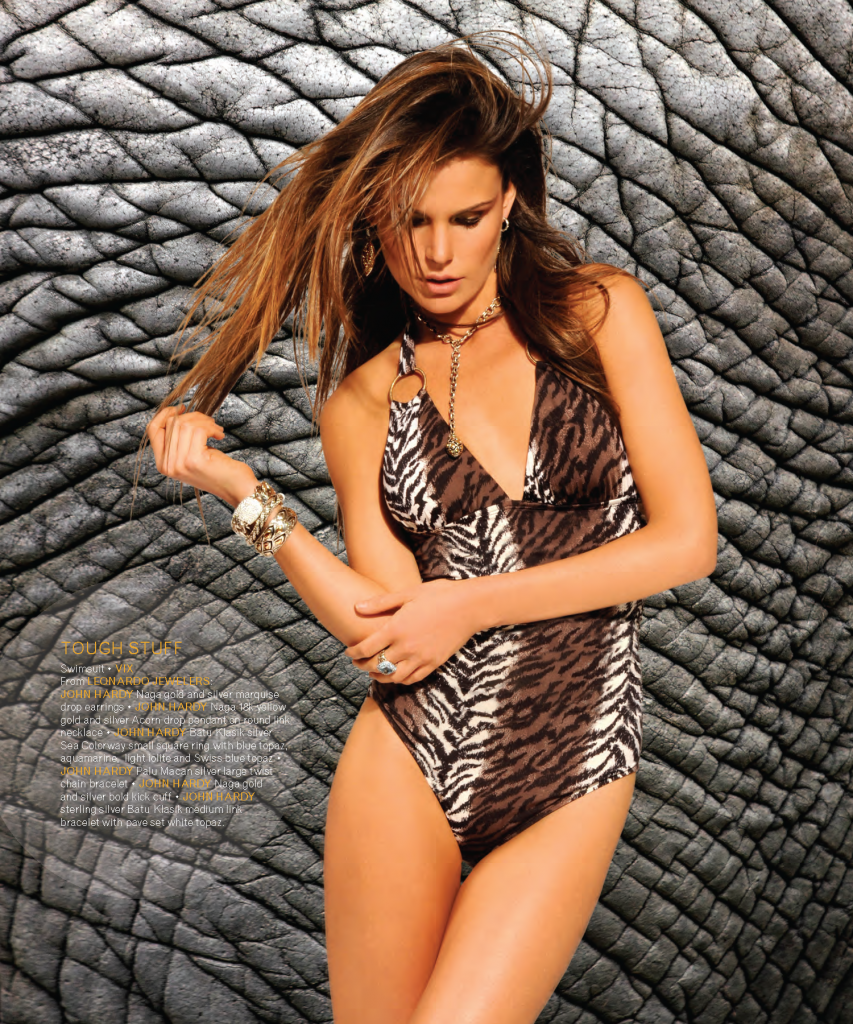
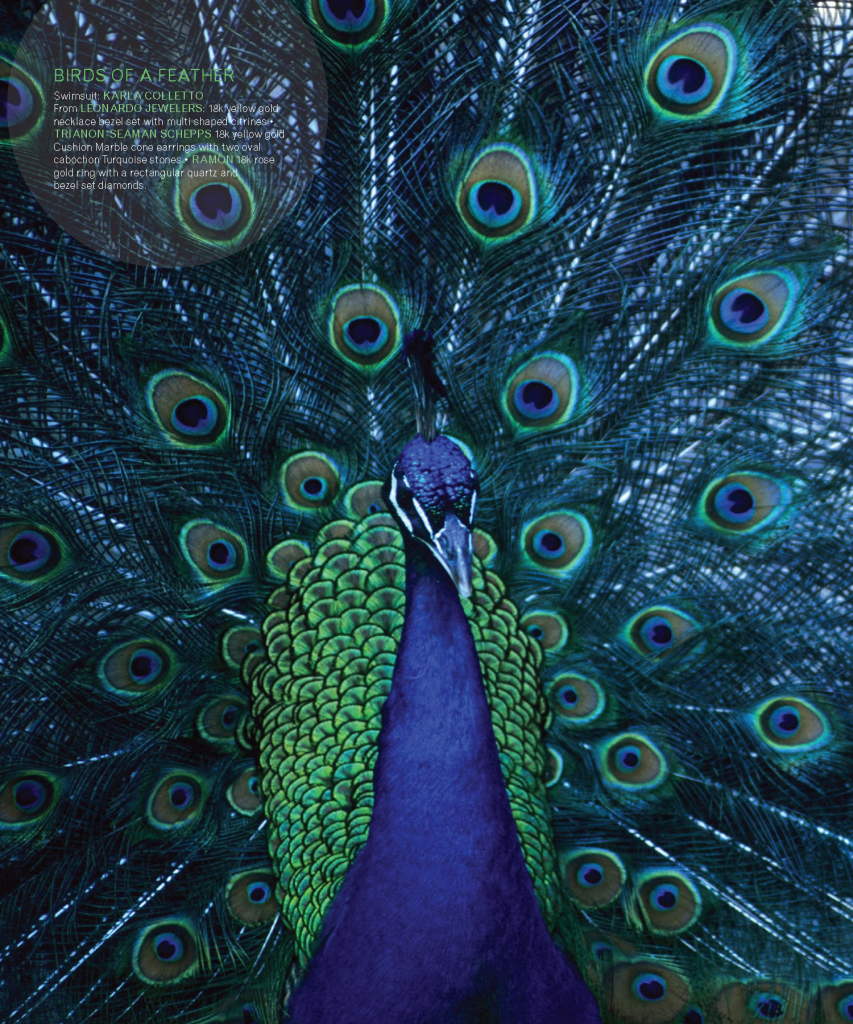




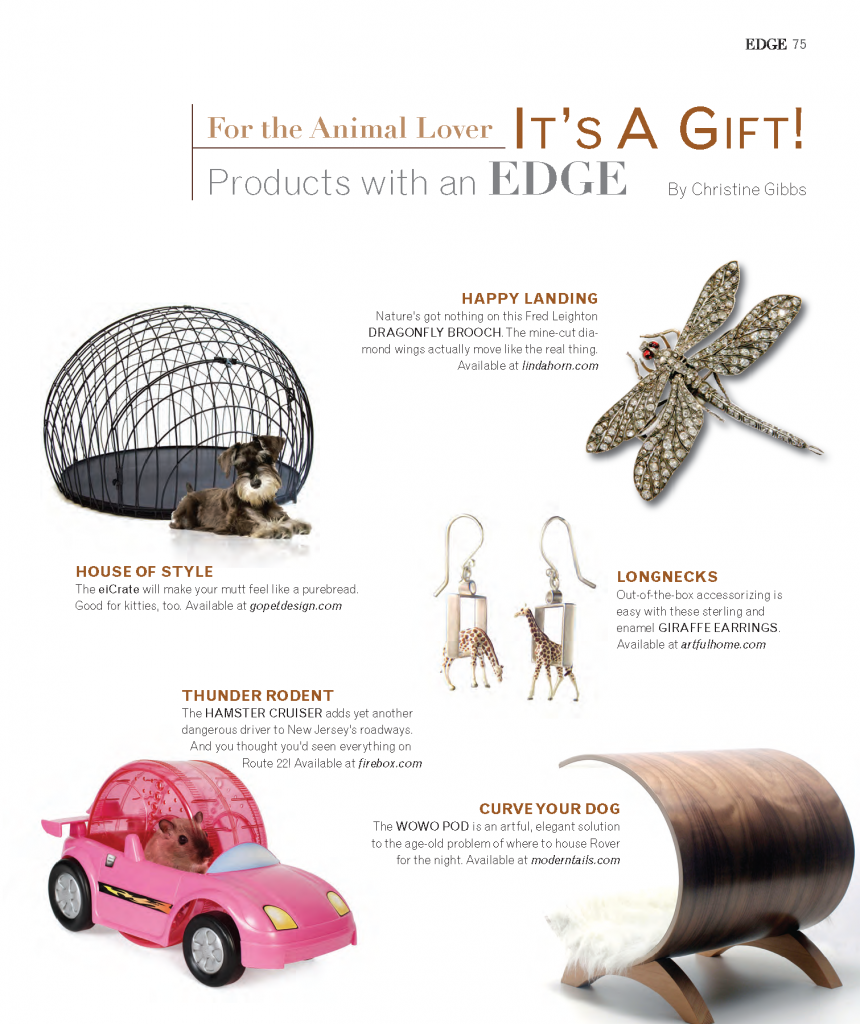


 REN’S GLYCOLACTIC SKIN RENEWAL PEEL MASK ($55 / 1.7 oz.) is a potent bioactive complex that reduces fine lines and improves tone and firmness. This treatment safely and effectively resurfaces the skin without causing irritation. Its four-fruit-acidcomplex (lactic, glycolic, tartaric and citric) and papain enzyme create a gentle-yet-potent exfoliating action, which leaves skin glowing once again. In addition to its obvious aesthetic benefits, Ren’s Peel Mask doesn’t include synthetic fragrances, silicones, synthetic dyes, or petrochemicals, which add a caustic element to an already somewhat harsh treatment. This mask is particularly recommended for congested and mature skin. It works well on post-acne scarring and sundamaged skin. Of course, since it’s a peel, sensitive skin types should be slightly cautious. Now that we’ve got ourselves a fresh canvas, nothing’s more vital to healthy looking skin than hydration. But, don’t be fooled—just because a night cream boasts an olive in the title, doesn’t mean it’s all natural! Several big-name labs throw in shoddy synthetic fragrances but leave out the nourishing organ ics.
REN’S GLYCOLACTIC SKIN RENEWAL PEEL MASK ($55 / 1.7 oz.) is a potent bioactive complex that reduces fine lines and improves tone and firmness. This treatment safely and effectively resurfaces the skin without causing irritation. Its four-fruit-acidcomplex (lactic, glycolic, tartaric and citric) and papain enzyme create a gentle-yet-potent exfoliating action, which leaves skin glowing once again. In addition to its obvious aesthetic benefits, Ren’s Peel Mask doesn’t include synthetic fragrances, silicones, synthetic dyes, or petrochemicals, which add a caustic element to an already somewhat harsh treatment. This mask is particularly recommended for congested and mature skin. It works well on post-acne scarring and sundamaged skin. Of course, since it’s a peel, sensitive skin types should be slightly cautious. Now that we’ve got ourselves a fresh canvas, nothing’s more vital to healthy looking skin than hydration. But, don’t be fooled—just because a night cream boasts an olive in the title, doesn’t mean it’s all natural! Several big-name labs throw in shoddy synthetic fragrances but leave out the nourishing organ ics. Transformation-Renewing Creme, and Invigorating Night Gel-Firming Treatment. The payoff is truly amazing. Each formulation is oil-free, light in texture, firming, pore-tightening, and promotes uniform pigmentation. Remarkably, this trio is also free of carcinogenic parabens, sulfates, and triclosan. My next recommendation has long been a staple among beauty industry professionals; its natural botanical composition has always taken a backseat to its unbelievable simplistic fine quality.
Transformation-Renewing Creme, and Invigorating Night Gel-Firming Treatment. The payoff is truly amazing. Each formulation is oil-free, light in texture, firming, pore-tightening, and promotes uniform pigmentation. Remarkably, this trio is also free of carcinogenic parabens, sulfates, and triclosan. My next recommendation has long been a staple among beauty industry professionals; its natural botanical composition has always taken a backseat to its unbelievable simplistic fine quality.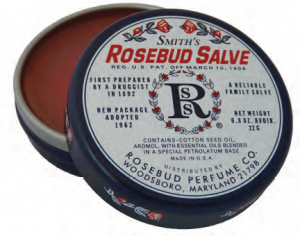 Every girl needs a sweet vernal lip pigment to complement the renewal of dewy skin, which is why ROSEBUD PERFUME’s lip balms and salves are an absolute essential for anyone who plans to be kissed this summer. Touched ever so slightly with the faintest of pink hues (listed here from lightest to darkest), Smith’s Strawberry Lip Balm, Rosebud Salve, and Minted Rose Lip Balms are masterful (and at a price of $6/.8 oz., they’re worth exploring, guilt-free). Each of Rosebud’s products tastes and smells delicious, is free of any and all synthetic additives, and maintains the company’s long-standing policy of no animal testing.
Every girl needs a sweet vernal lip pigment to complement the renewal of dewy skin, which is why ROSEBUD PERFUME’s lip balms and salves are an absolute essential for anyone who plans to be kissed this summer. Touched ever so slightly with the faintest of pink hues (listed here from lightest to darkest), Smith’s Strawberry Lip Balm, Rosebud Salve, and Minted Rose Lip Balms are masterful (and at a price of $6/.8 oz., they’re worth exploring, guilt-free). Each of Rosebud’s products tastes and smells delicious, is free of any and all synthetic additives, and maintains the company’s long-standing policy of no animal testing.